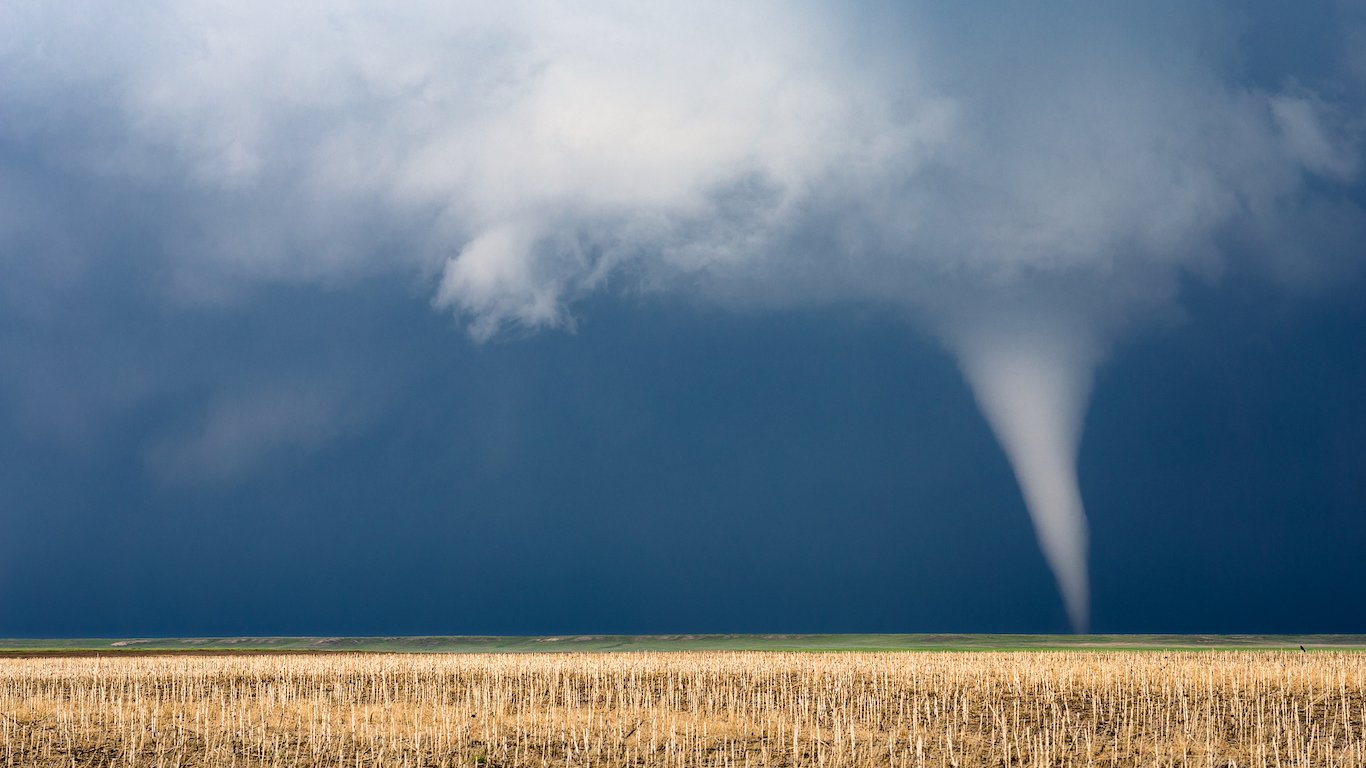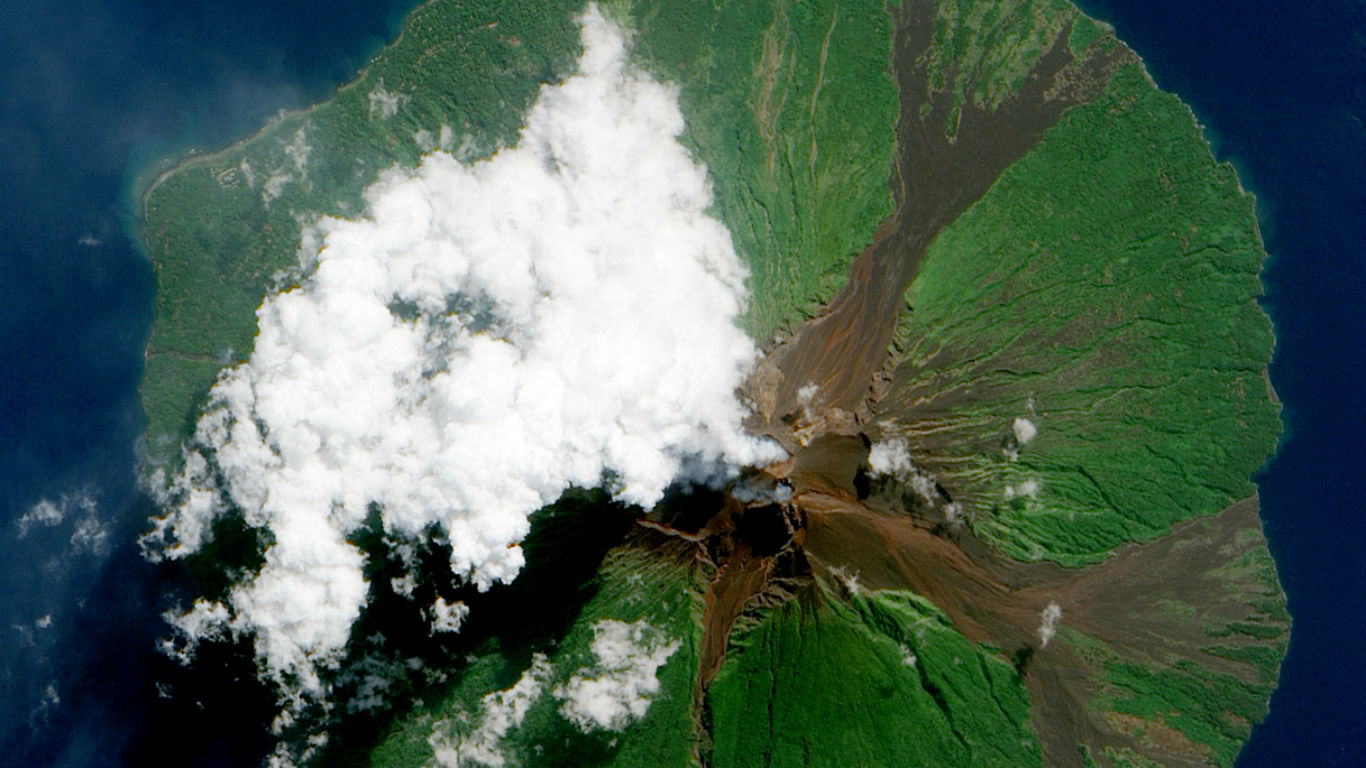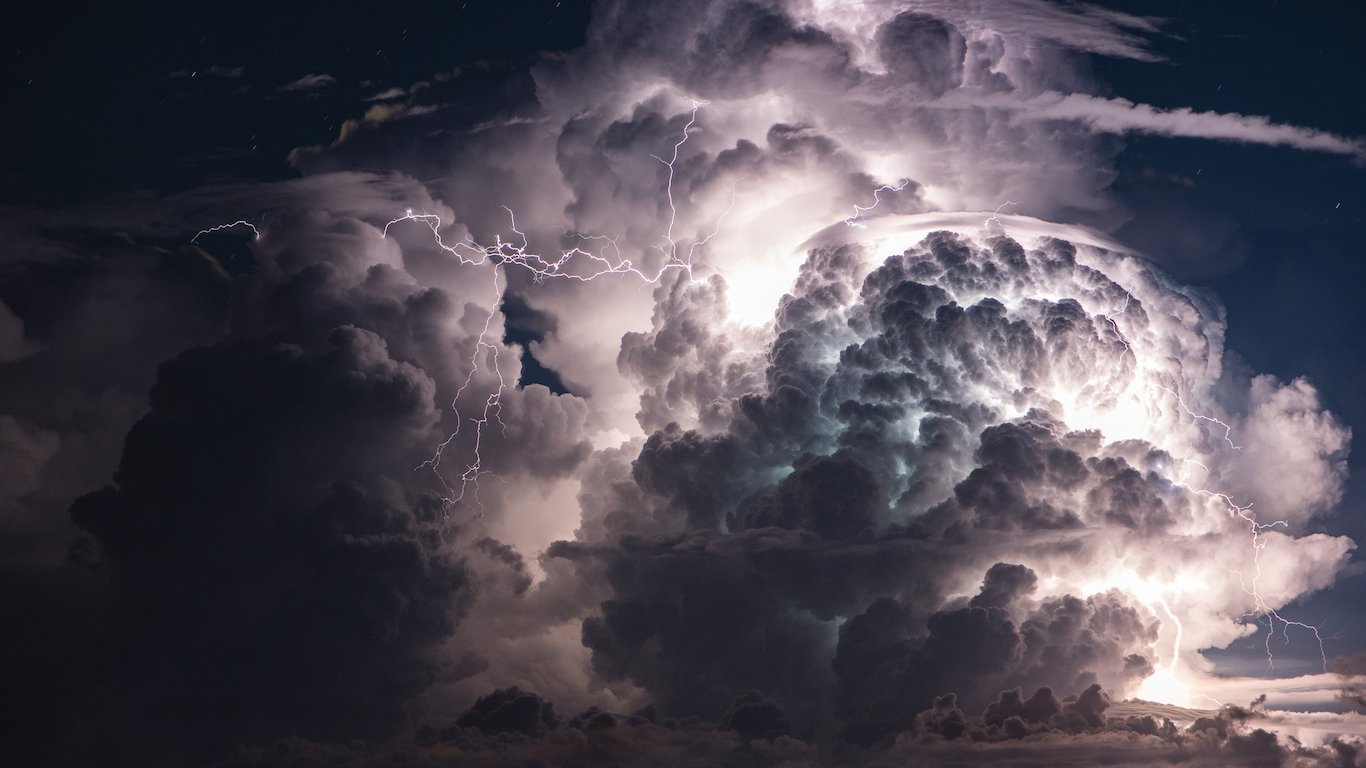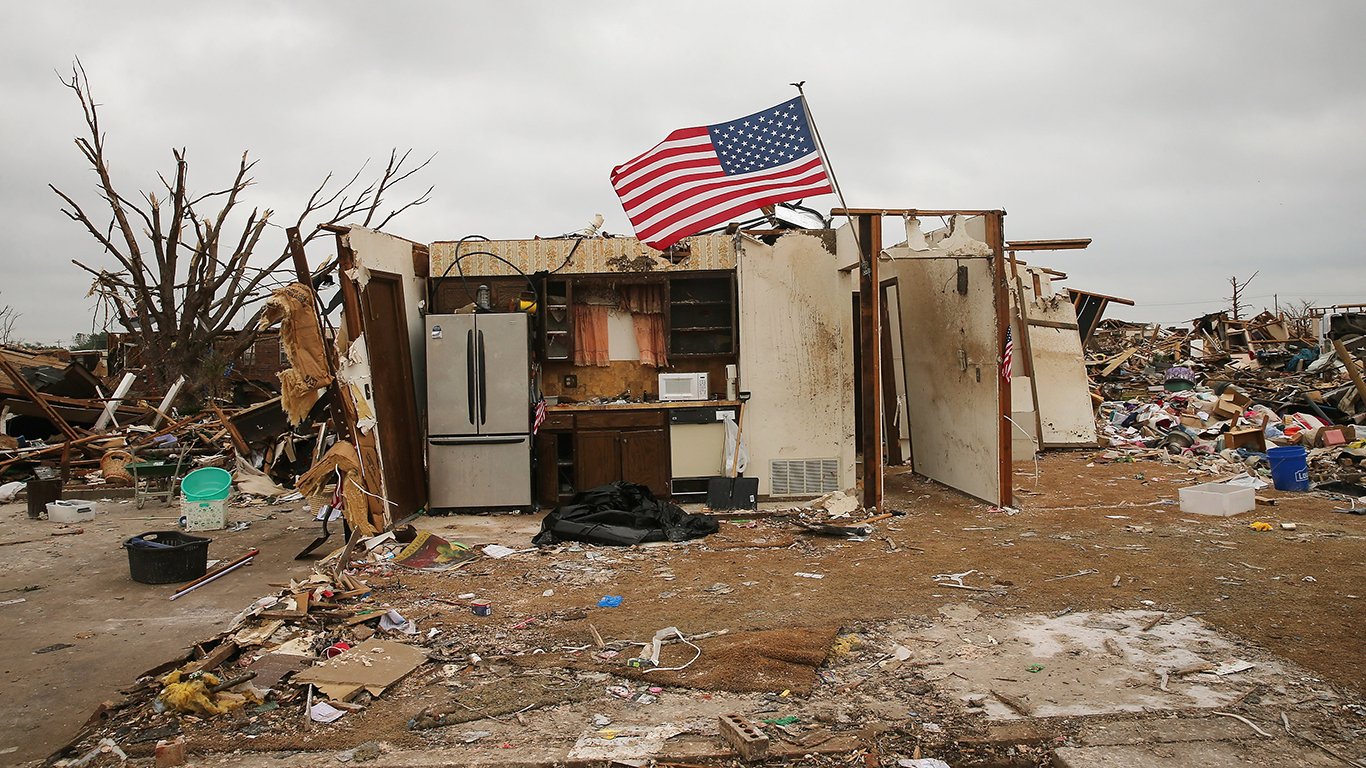

On Sunday, Aug. 16, in the midst of a heat wave that had spread across most of the western United States, the temperature reached 130 F in California’s Death Valley, the hottest reliably recorded on earth. This is only the latest news of heat records being broken, as global temperatures continue to rise, year after year. This July was the third warmest on record, with worldwide average temperatures only higher during the month in 2016 and 2019.
While warm and even hot weather can be enjoyable, extreme heat puts many — especially infants, young children, and older adults — at risk of heat-related illnesses. The frequency of heat-related health issues, such as heat stroke and exhaustion, is directly related to how high temperatures are and the level of humidity. And some U.S. cities are more vulnerable to those conditions. According to the Department of Homeland Security, extreme heat often results in a greater number of annual deaths than any other weather-related hazard.
24/7 Wall St. has identified the country’s 50 hottest cities (with populations of at least 10,000) based on the average number of 90-plus degree days per year using climate data from the National Oceanic and Atmospheric Administration.
In the 50 large cities on the list, the temperature reaches at least 90 degrees Fahrenheit for an average of 67 days or more per year. In some of these cities, the temperature is this high in more than double that number of days (and more) a year.
Click here to see the 50 hottest cities in America.
Click here to see our methodology.
While Death Valley is not large enough to make the list, several other major metropolitan areas in that part of the country did. The majority of these cities are located in the South and Southwest. Texas has the most cities on this list of hottest U.S. cities, with 16, followed by Florida with eight. Among the other hottest states in the country with numerous cities on our list are Louisiana and Mississippi.
Many of the hottest cities in America are also relatively dense and populous urban areas. As human-made creations such as buildings, roads, and other infrastructure replace natural landscapes, temperatures often rise. The result is what is referred to as a “heat island.” In the evening, the temperature in an urban heat island can be as much as 22 degrees warmer than in nearby rural areas.
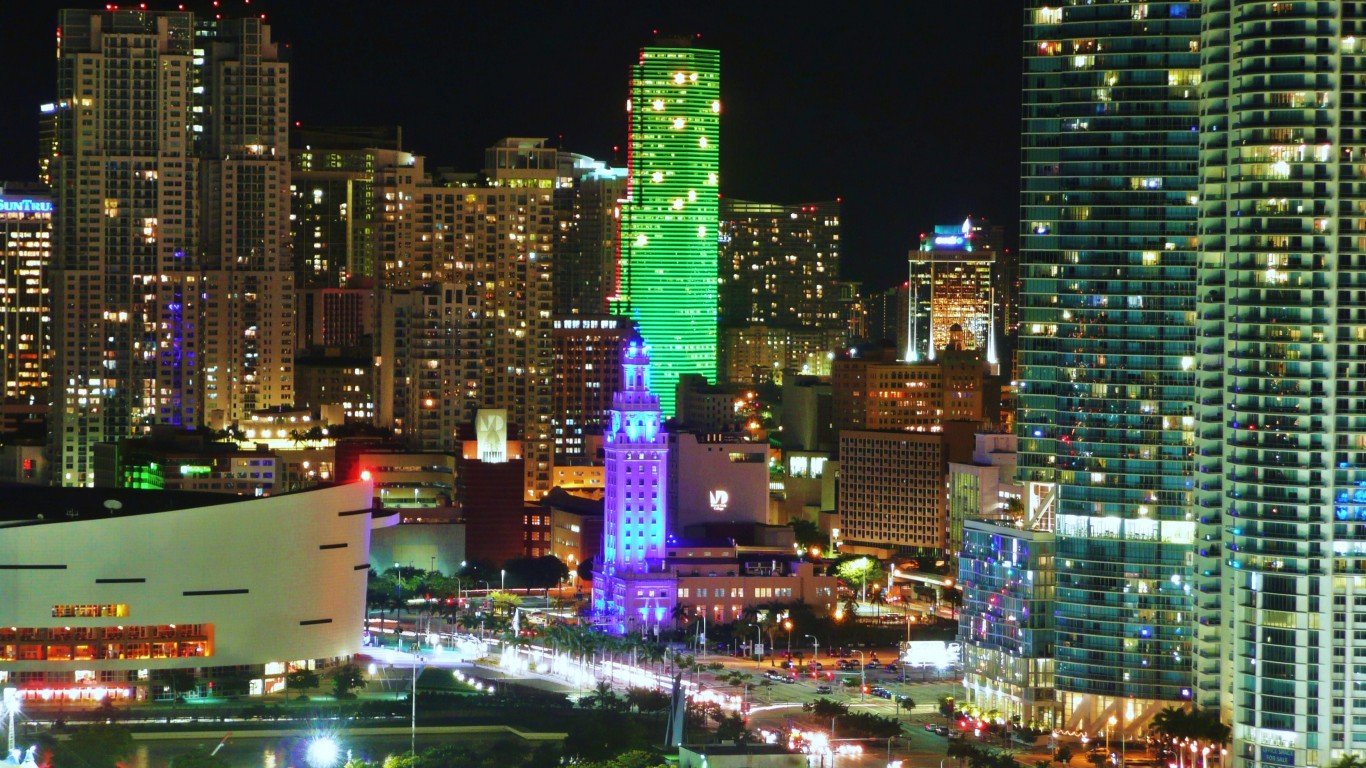
50. Miami, FL
> Days per year with 90 F+ temp.: 68
> Highest temp. on record (1948-2018): 98.0 F
> Normal mid-summer high: 91.0 F
> Normal year-round high: 84.3 F
[in-text-ad]
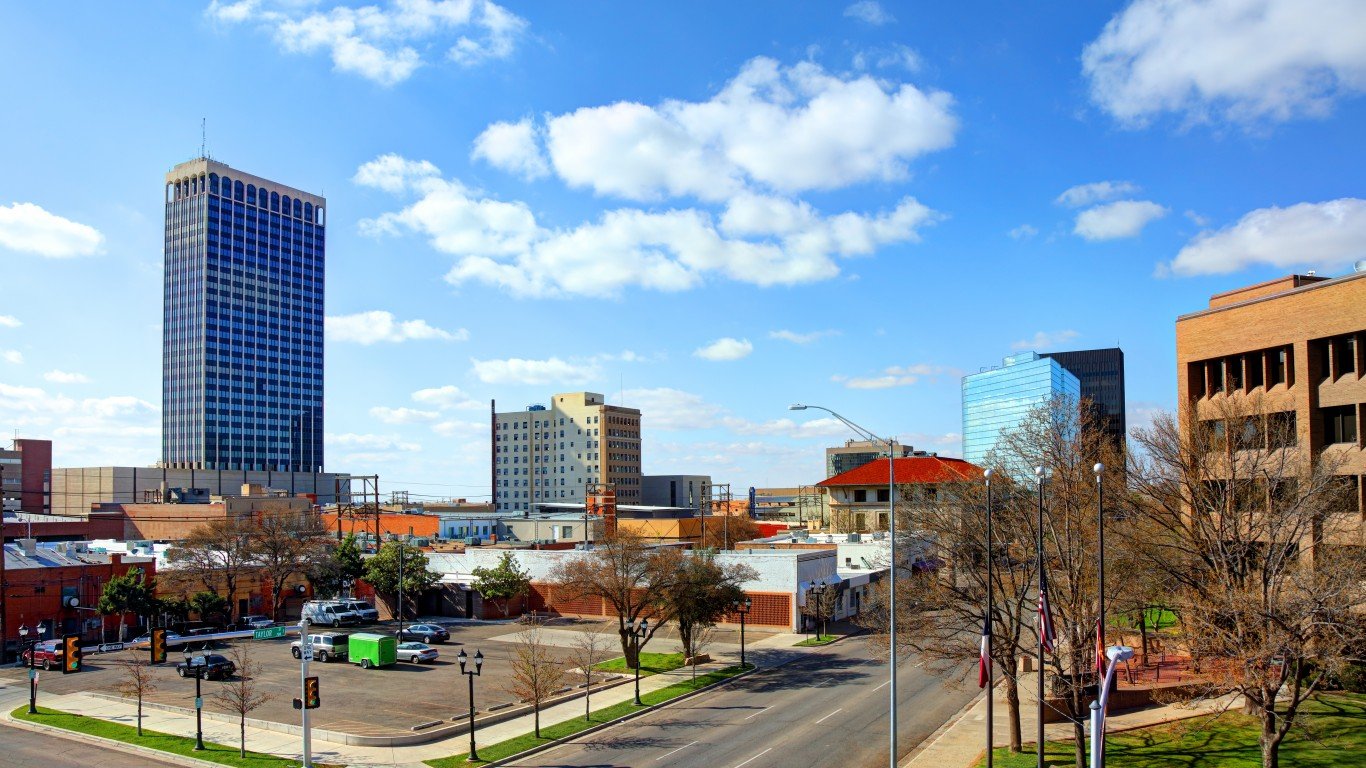
49. Amarillo, TX
> Days per year with 90 F+ temp.: 68
> Highest temp. on record (1947-2018): 111.0 F
> Normal mid-summer high: 91.4 F
> Normal year-round high: 70.9 F
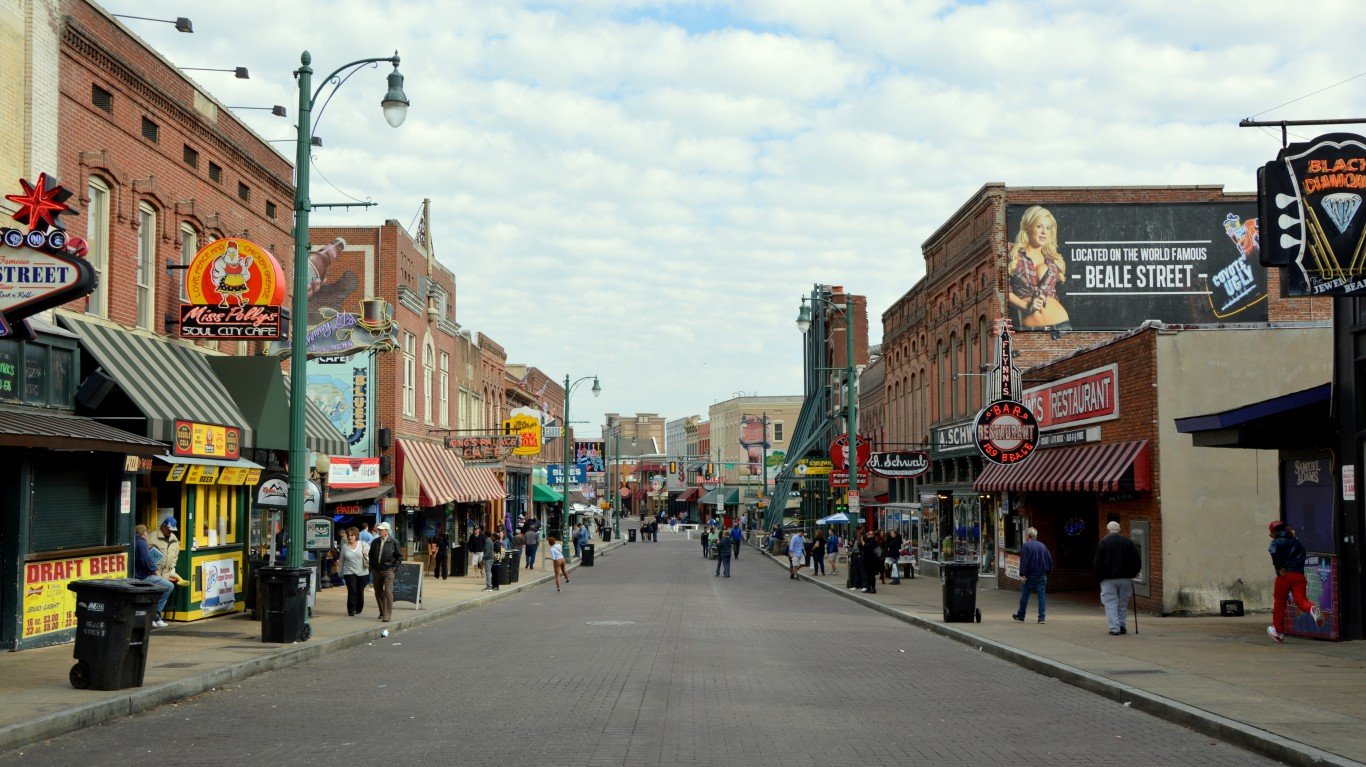
48. Memphis, TN
> Days per year with 90 F+ temp.: 68
> Highest temp. on record (1940-2018): 108.0 F
> Normal mid-summer high: 91.6 F
> Normal year-round high: 72.4 F
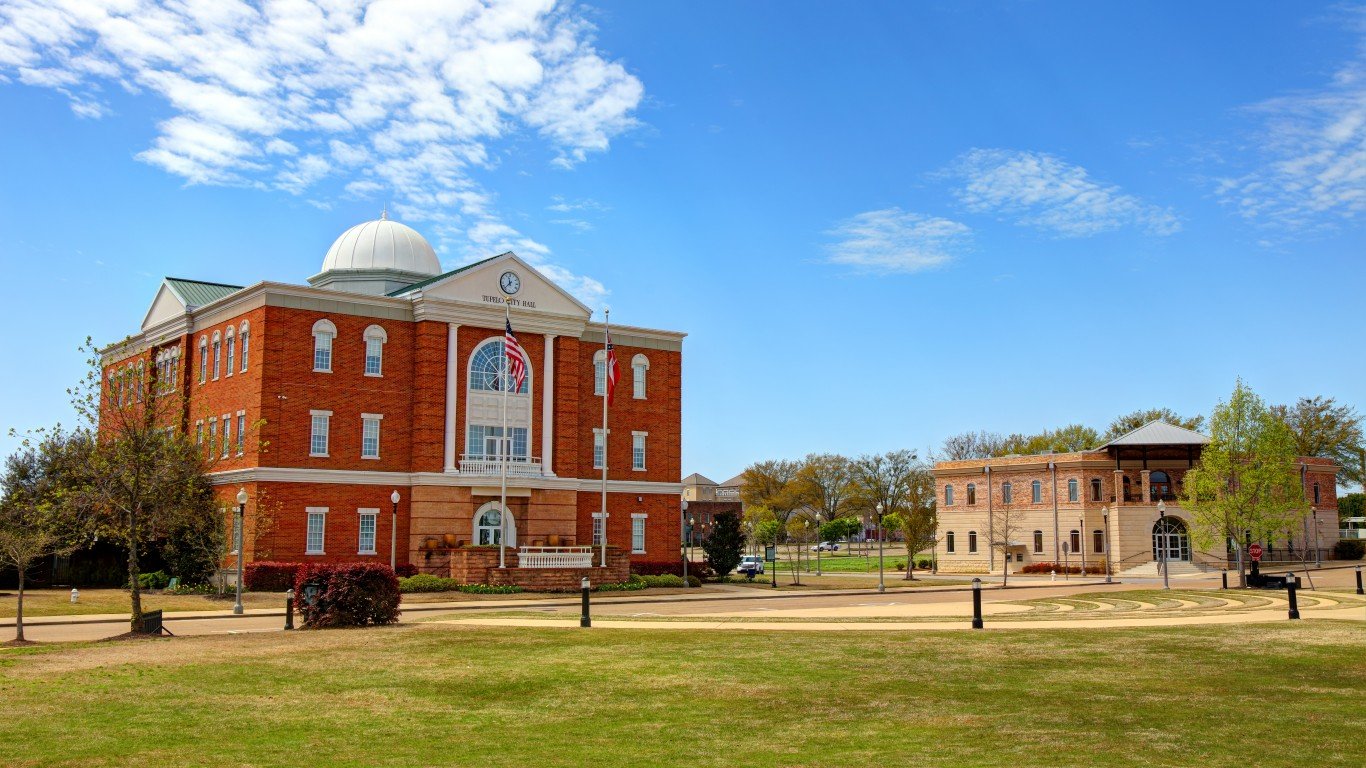
47. Tupelo, MS
> Days per year with 90 F+ temp.: 70
> Highest temp. on record (1962-2018): 107.0 F
> Normal mid-summer high: 91.7 F
> Normal year-round high: 73.4 F
[in-text-ad-2]
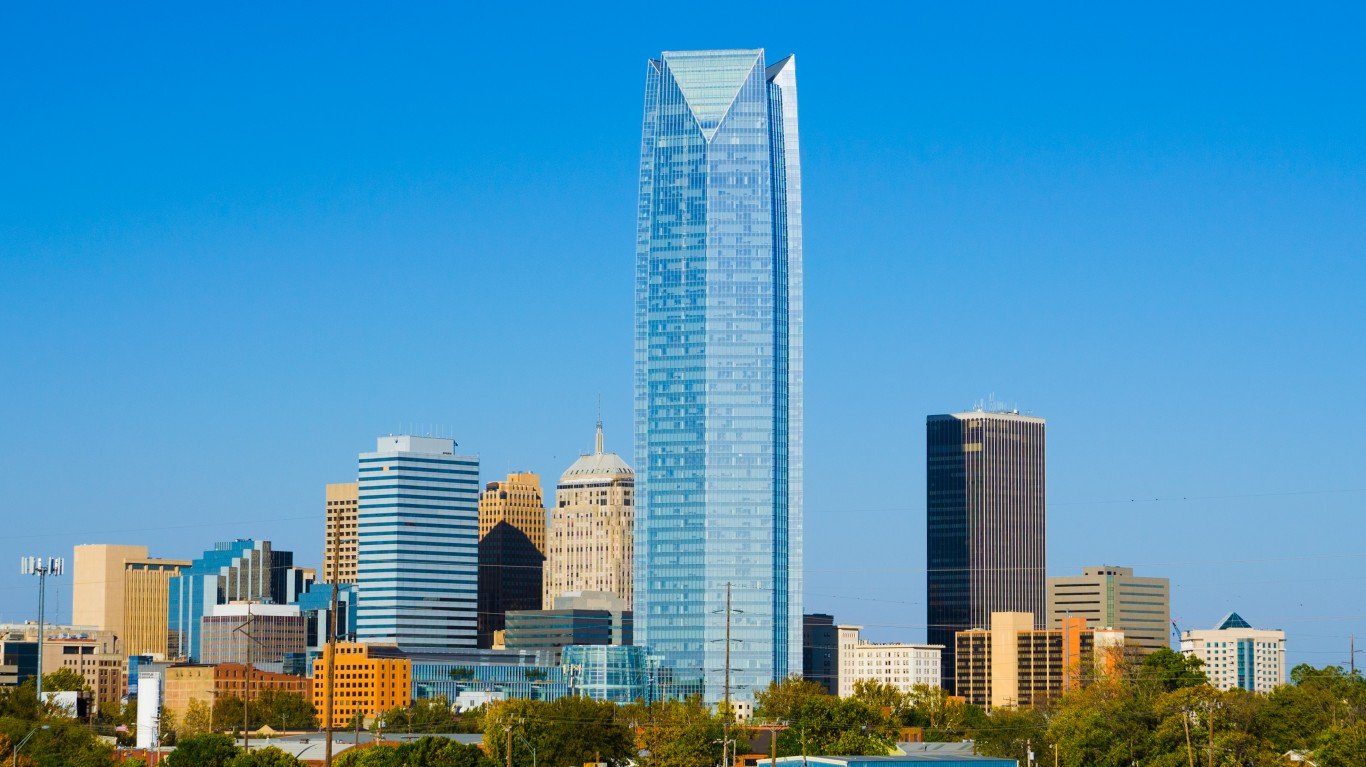
46. Oklahoma City, OK
> Days per year with 90 F+ temp.: 71
> Highest temp. on record (1948-2018): 113.0 F
> Normal mid-summer high: 93.9 F
> Normal year-round high: 72.2 F
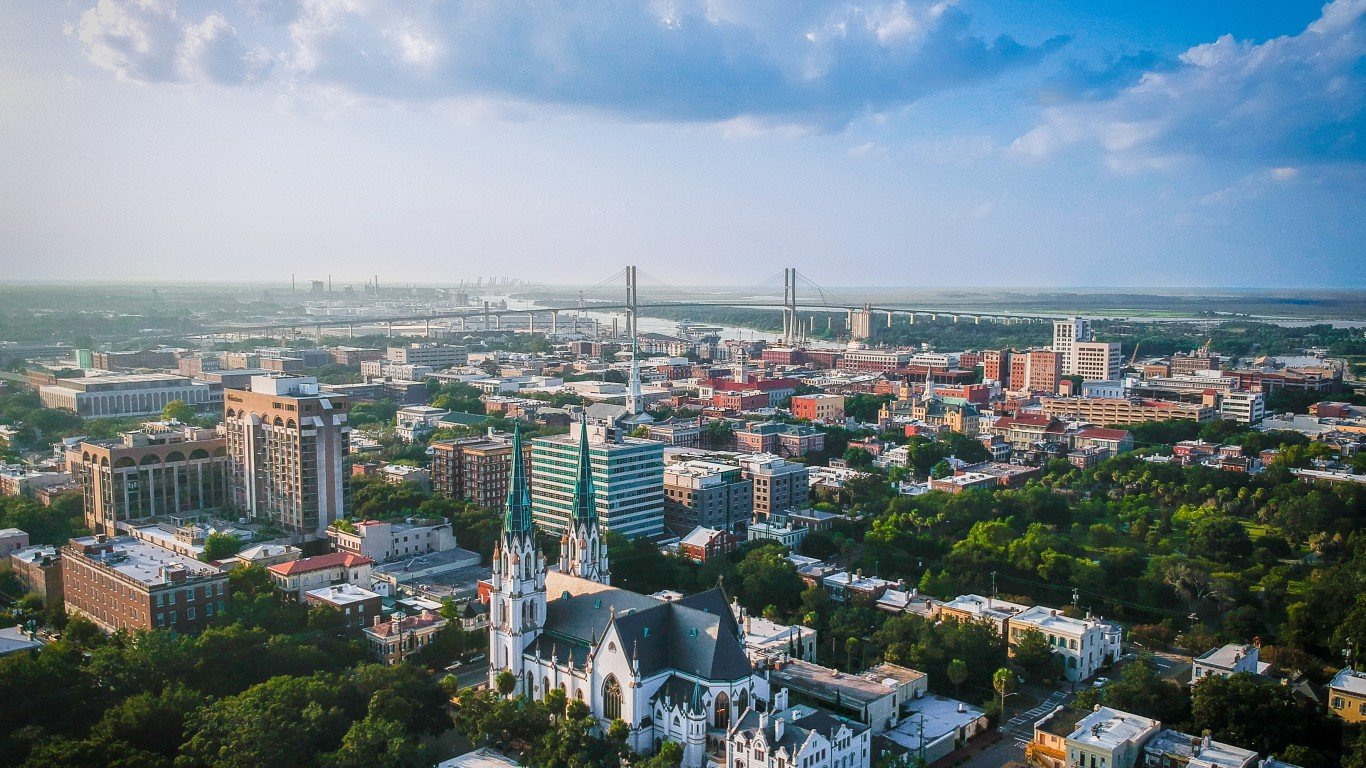
45. Savannah, GA
> Days per year with 90 F+ temp.: 72
> Highest temp. on record (1948-2018): 105.0 F
> Normal mid-summer high: 92.4 F
> Normal year-round high: 77.4 F
[in-text-ad]
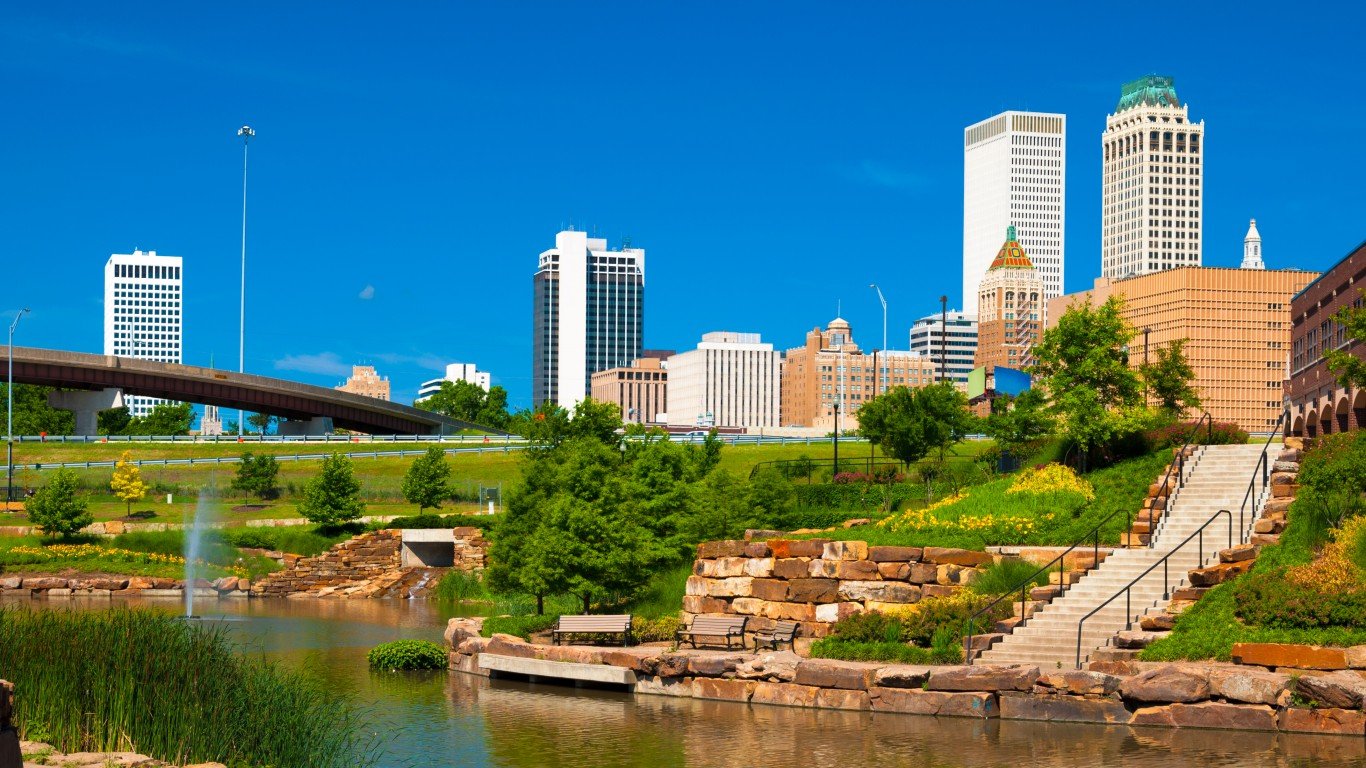
44. Tulsa, OK
> Days per year with 90 F+ temp.: 73
> Highest temp. on record (1938-2018): 113.0 F
> Normal mid-summer high: 93.5 F
> Normal year-round high: 71.7 F
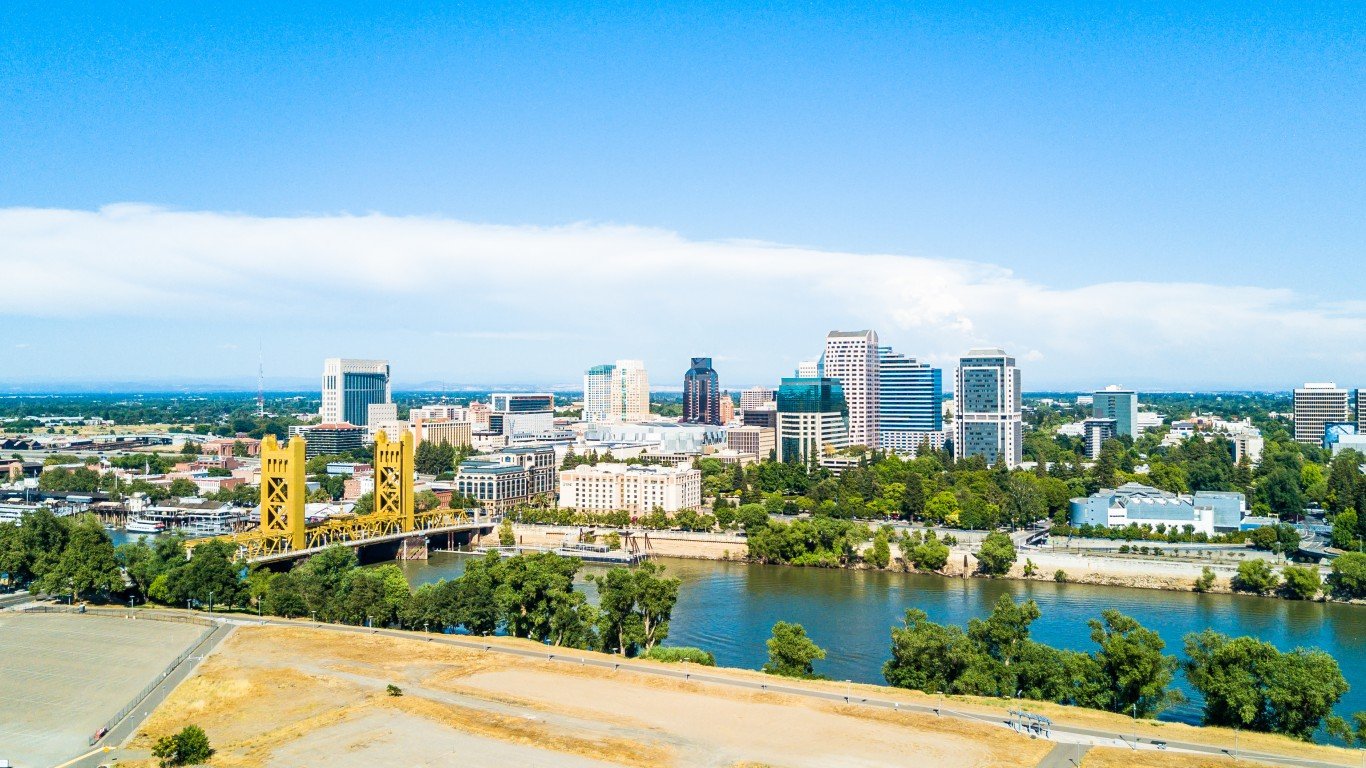
43. Sacramento, CA
> Days per year with 90 F+ temp.: 74
> Highest temp. on record (1941-2018): 115.0 F
> Normal mid-summer high: 92.1 F
> Normal year-round high: 73.6 F
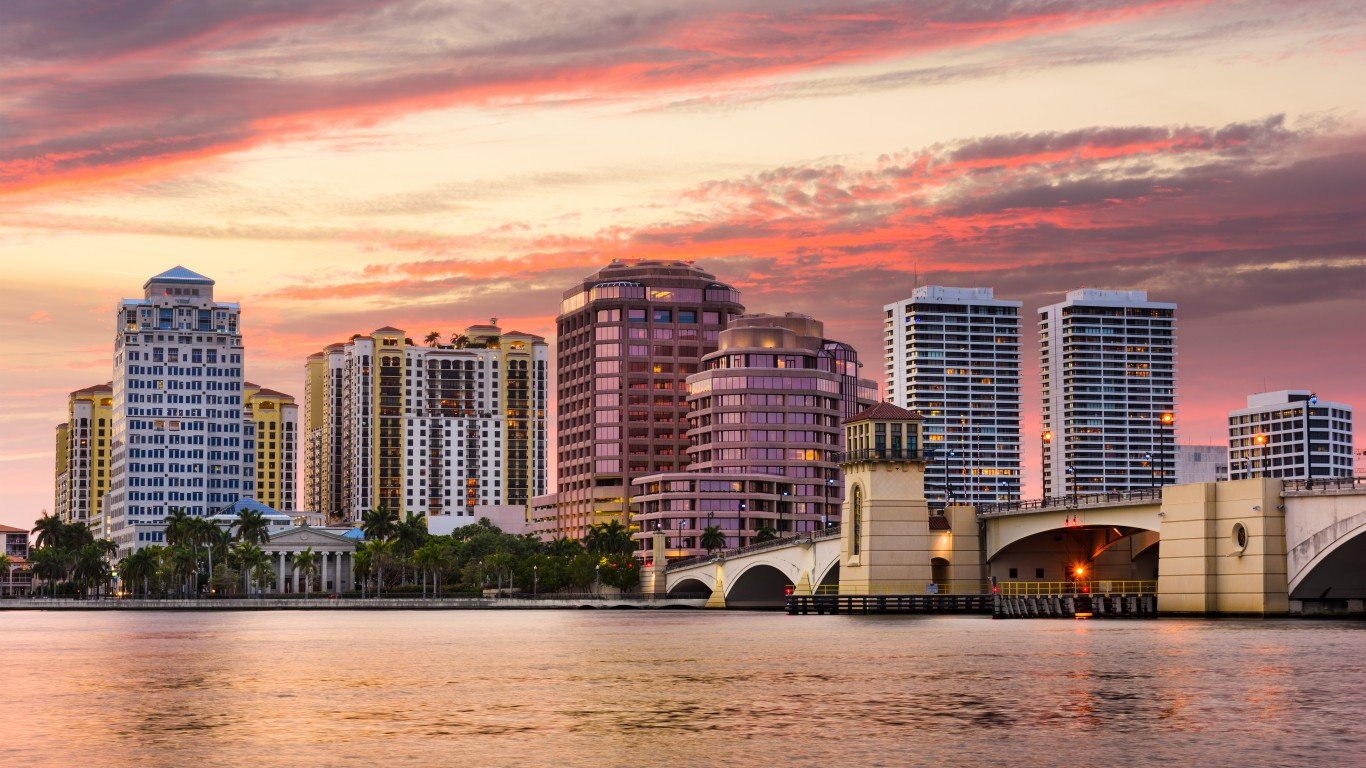
42. West Palm Beach, FL
> Days per year with 90 F+ temp.: 75
> Highest temp. on record (1938-2018): 101.0 F
> Normal mid-summer high: 90.1 F
> Normal year-round high: 82.9 F
[in-text-ad-2]
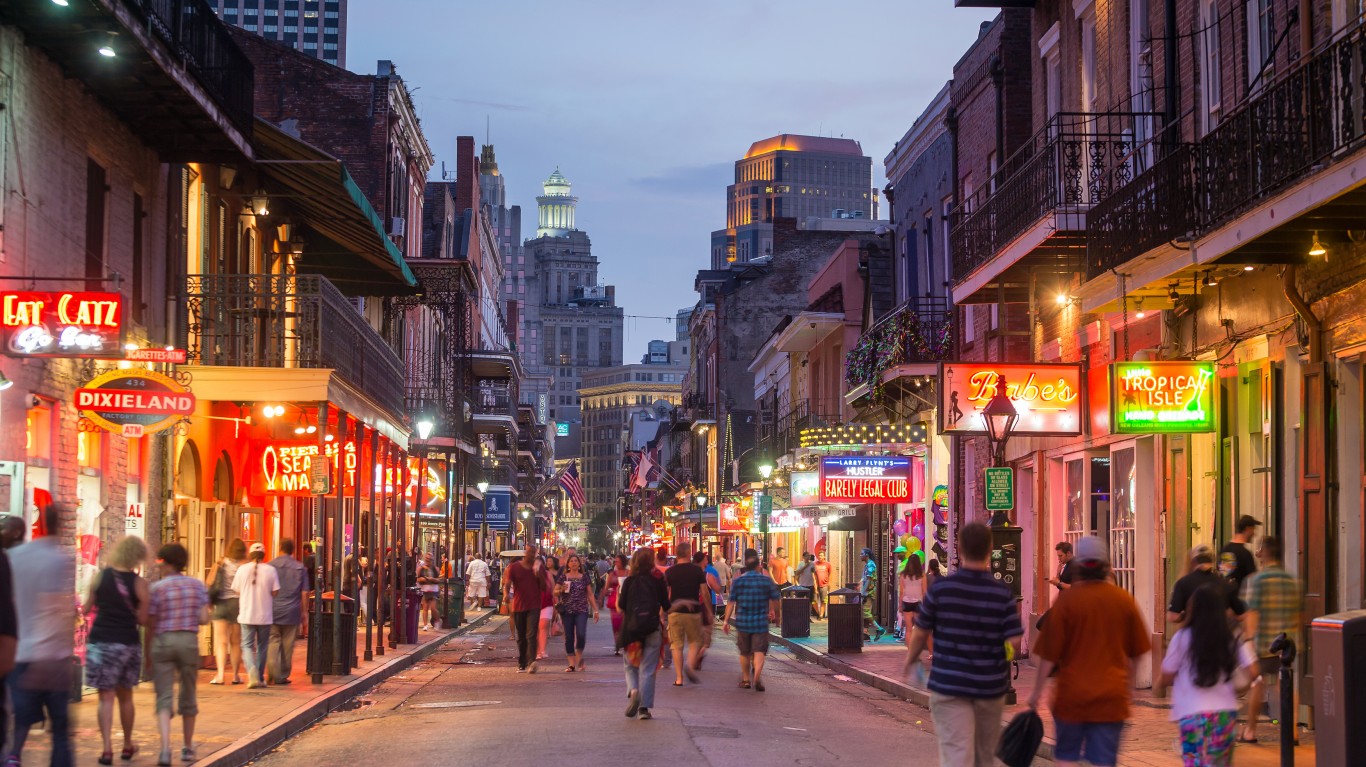
41. New Orleans, LA
> Days per year with 90 F+ temp.: 75
> Highest temp. on record (1948-2018): 102.0 F
> Normal mid-summer high: 91.2 F
> Normal year-round high: 78.2 F
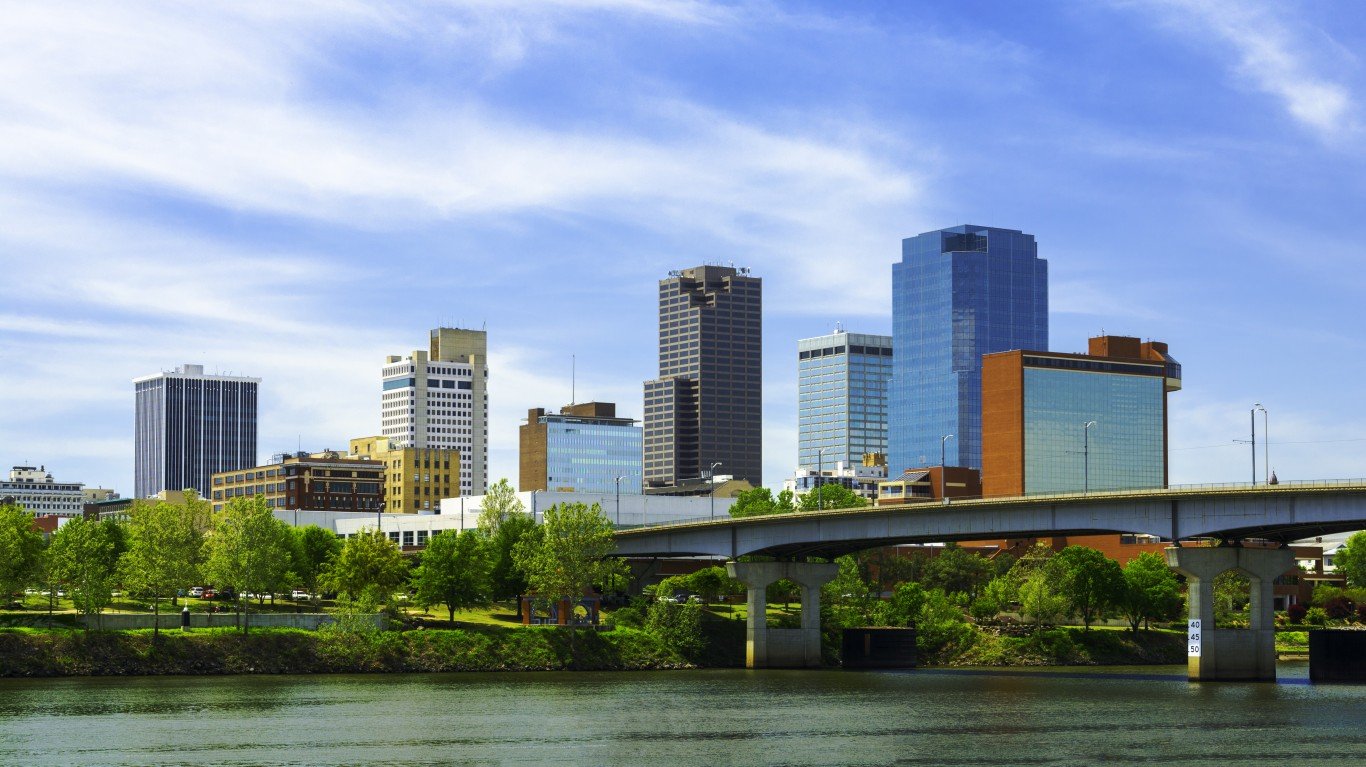
40. Little Rock, AR
> Days per year with 90 F+ temp.: 75
> Highest temp. on record (1938-2018): 114.0 F
> Normal mid-summer high: 92.6 F
> Normal year-round high: 72.8 F
[in-text-ad]
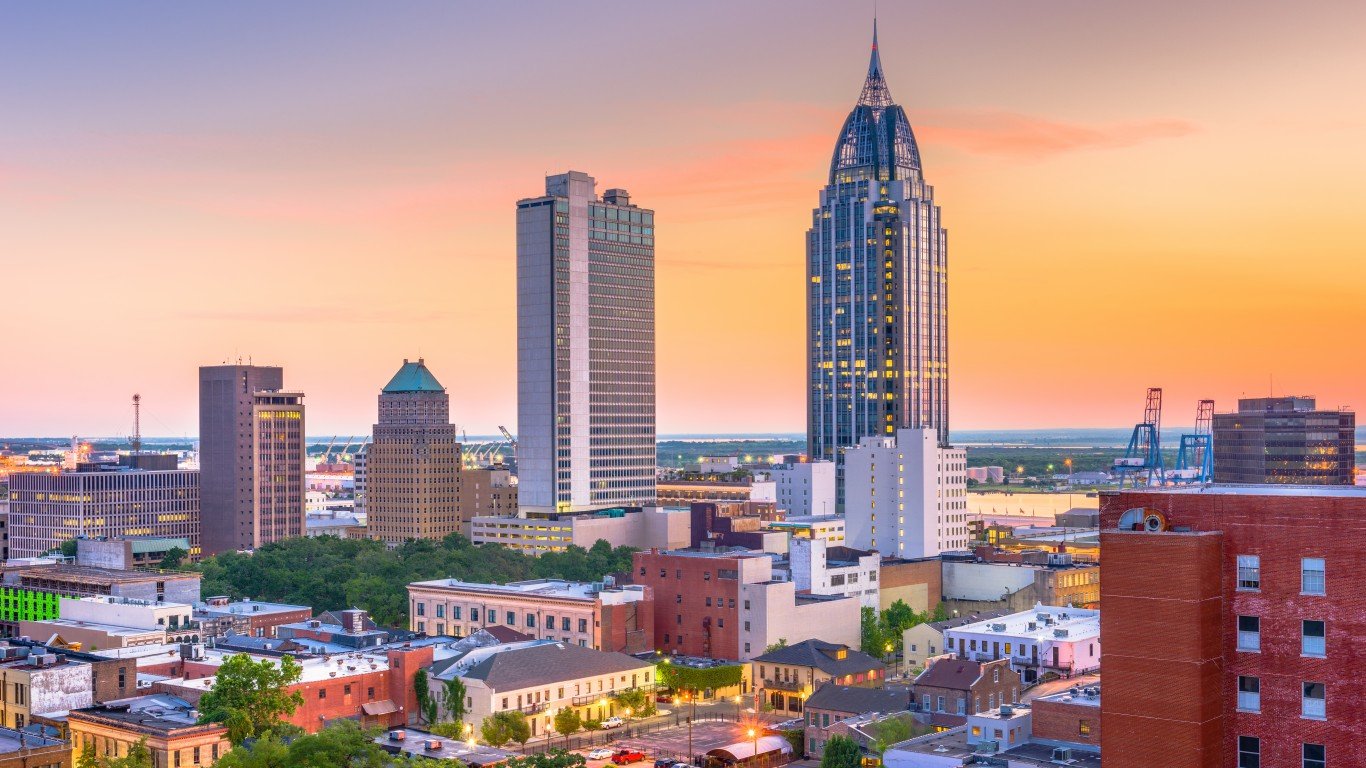
39. Mobile, AL
> Days per year with 90 F+ temp.: 76
> Highest temp. on record (1948-2018): 105.0 F
> Normal mid-summer high: 90.5 F
> Normal year-round high: 76.7 F
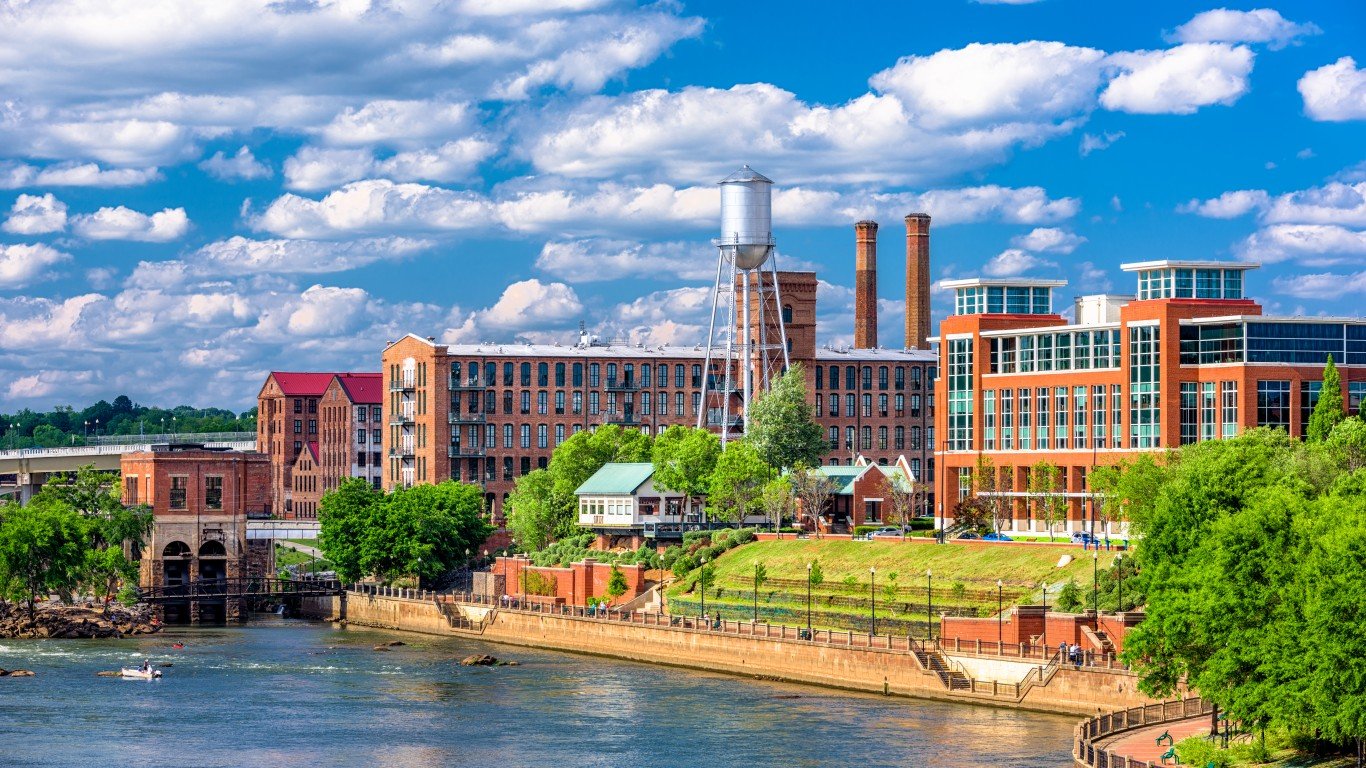
38. Columbus, GA
> Days per year with 90 F+ temp.: 78
> Highest temp. on record (1948-2018): 106.0 F
> Normal mid-summer high: 92.2 F
> Normal year-round high: 76.2 F
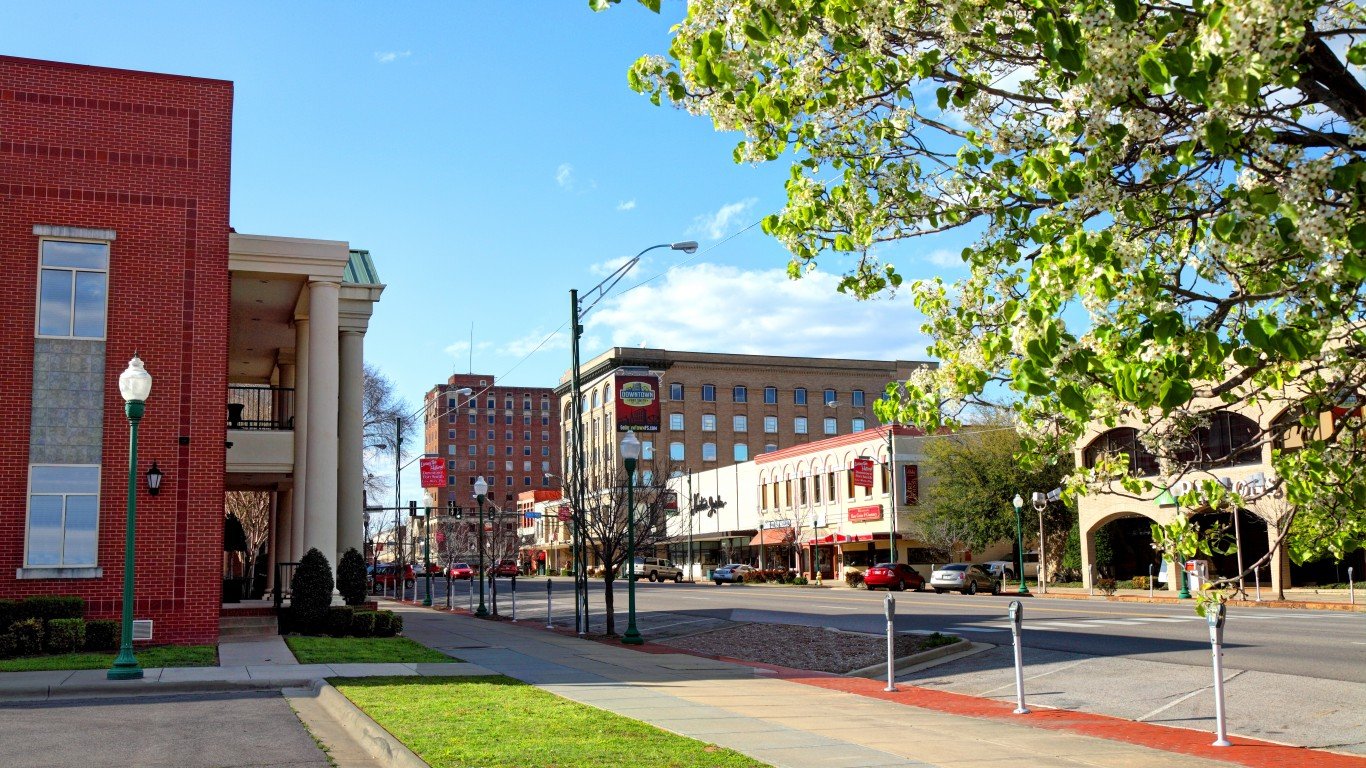
37. Fort Smith, AR
> Days per year with 90 F+ temp.: 78
> Highest temp. on record (1945-2018): 115.0 F
> Normal mid-summer high: 93.4 F
> Normal year-round high: 72.8 F
[in-text-ad-2]
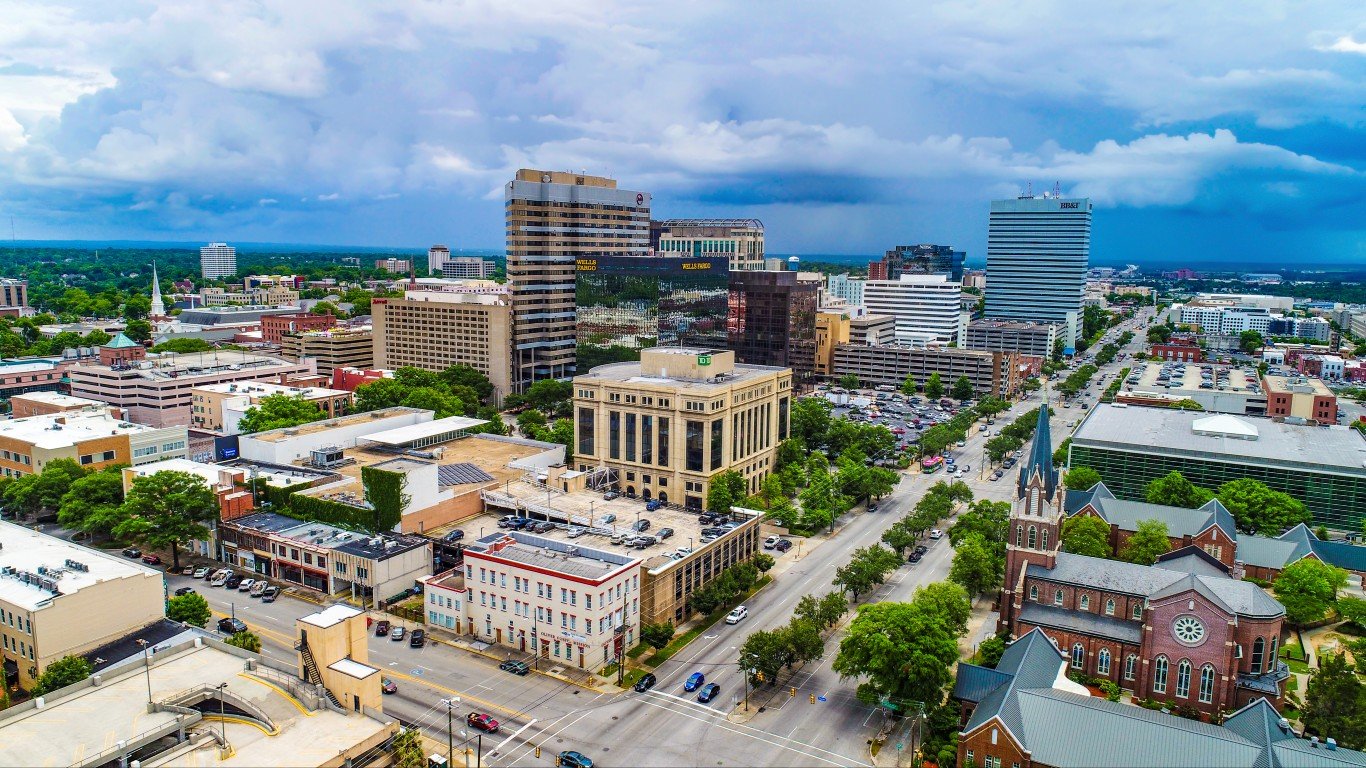
36. Columbia, SC
> Days per year with 90 F+ temp.: 79
> Highest temp. on record (1948-2018): 109.0 F
> Normal mid-summer high: 92.7 F
> Normal year-round high: 75.4 F
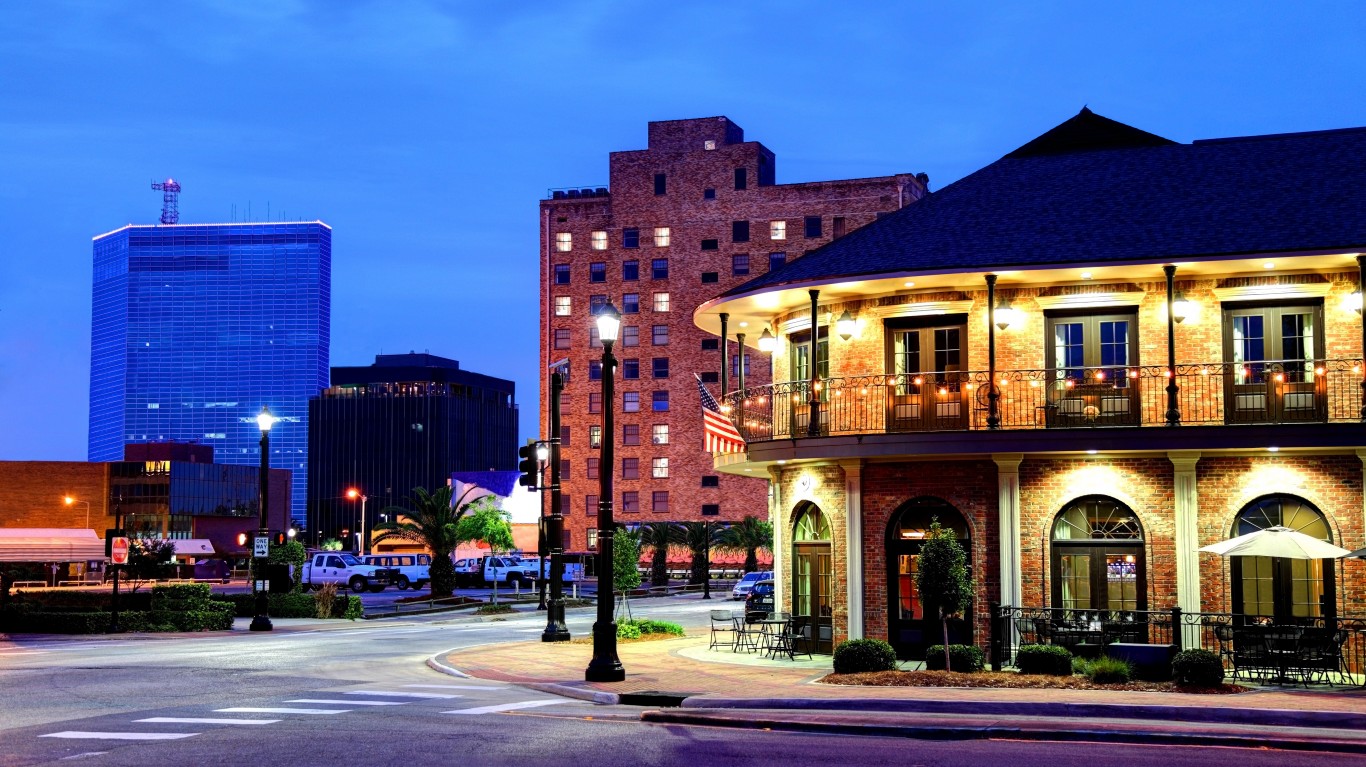
35. Lake Charles, LA
> Days per year with 90 F+ temp.: 80
> Highest temp. on record (1961-2018): 107.0 F
> Normal mid-summer high: 91.9 F
> Normal year-round high: 78.0 F
[in-text-ad]
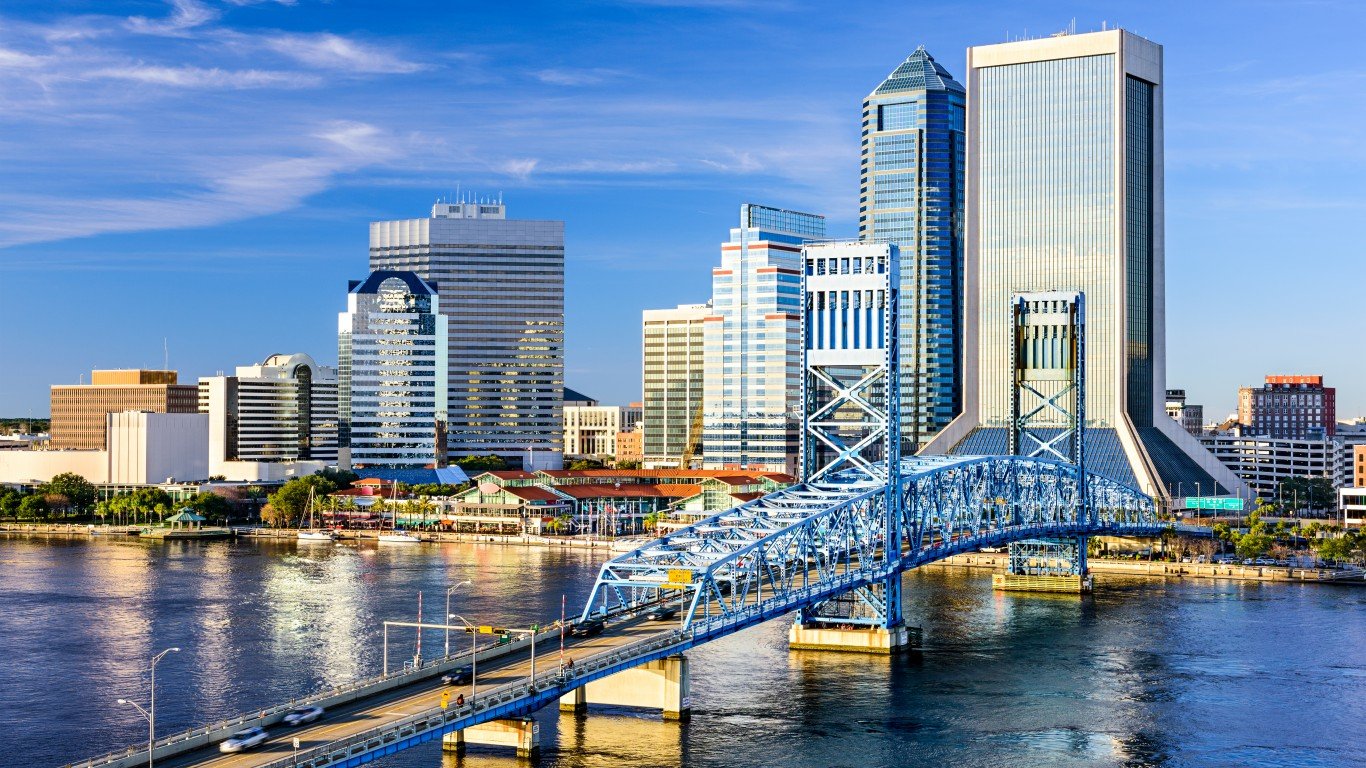
34. Jacksonville, FL
> Days per year with 90 F+ temp.: 82
> Highest temp. on record (1938-2018): 105.0 F
> Normal mid-summer high: 92.0 F
> Normal year-round high: 79.3 F
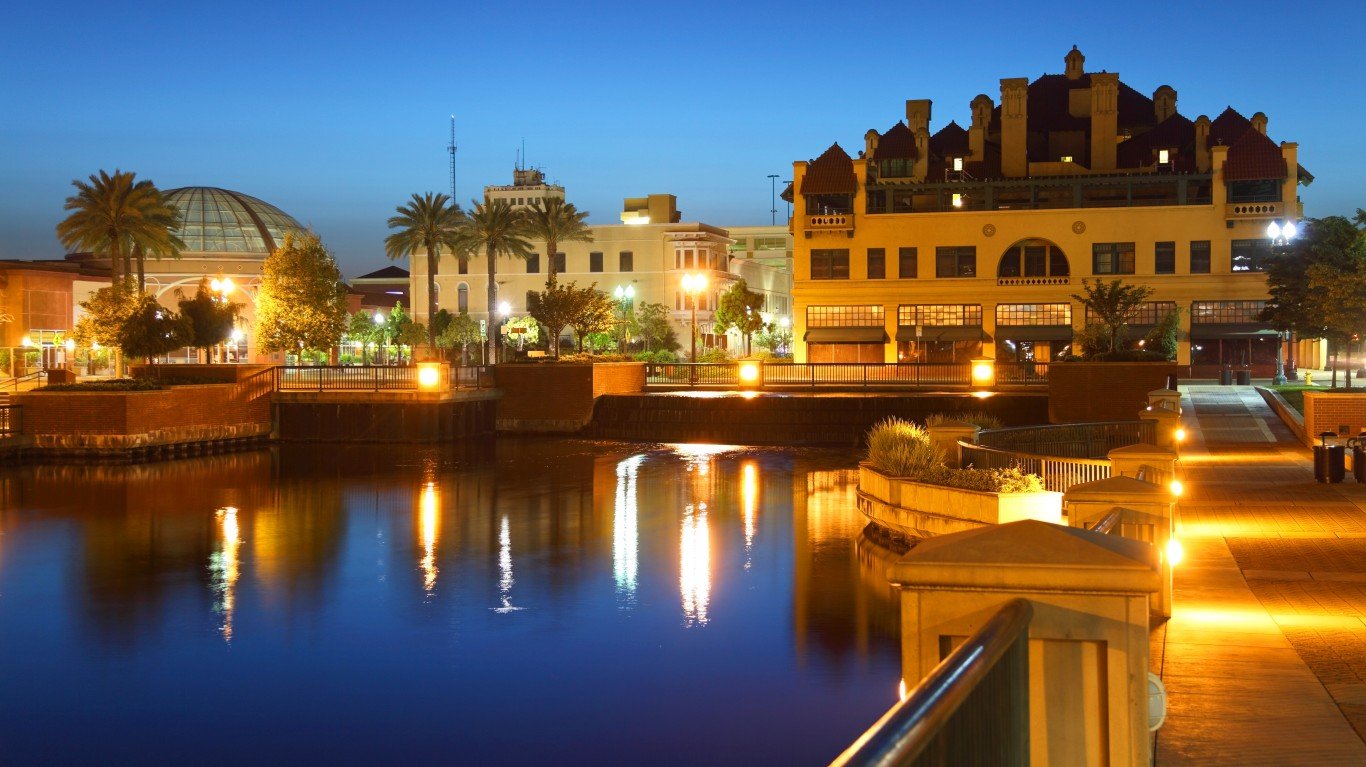
33. Stockton, CA
> Days per year with 90 F+ temp.: 83
> Highest temp. on record (1948-2018): 115.0 F
> Normal mid-summer high: 93.4 F
> Normal year-round high: 74.3 F
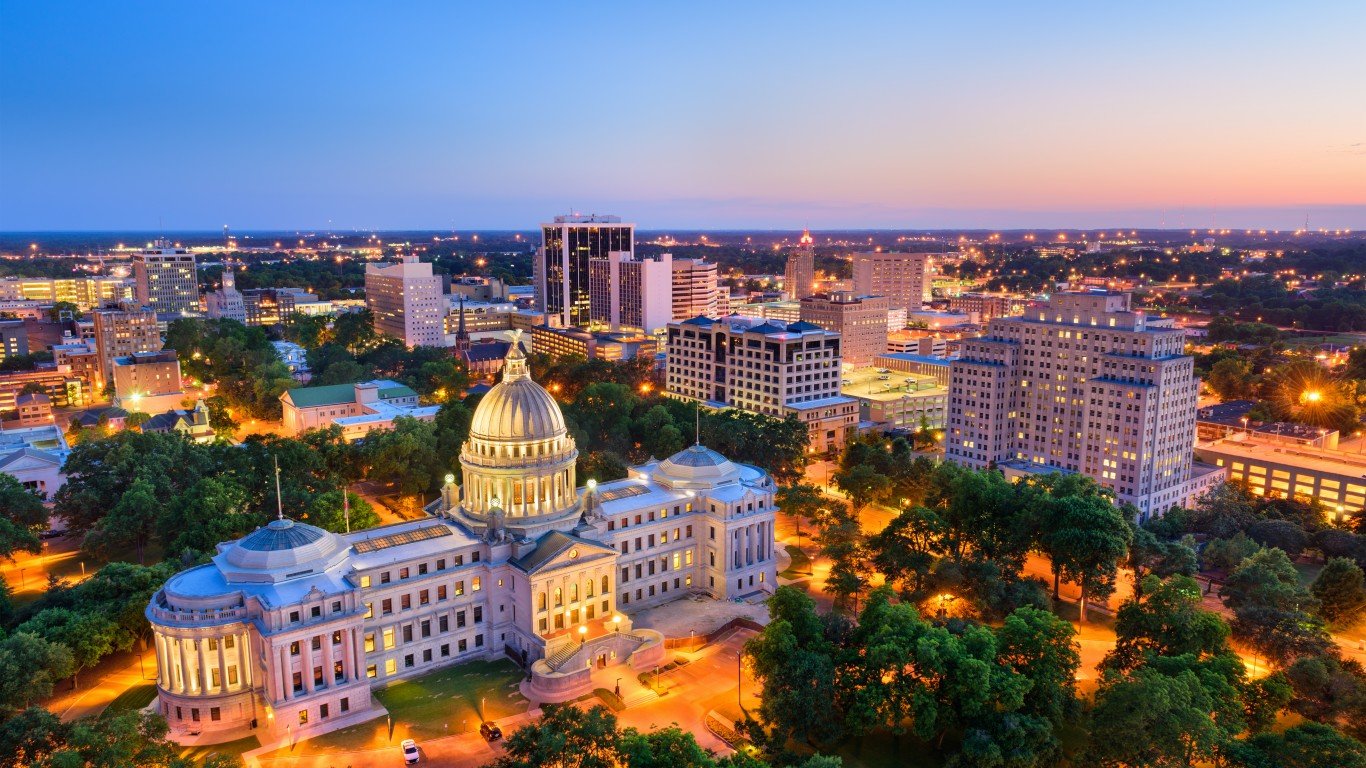
32. Jackson, MS
> Days per year with 90 F+ temp.: 84
> Highest temp. on record (1963-2018): 107.0 F
> Normal mid-summer high: 91.5 F
> Normal year-round high: 75.5 F
[in-text-ad-2]
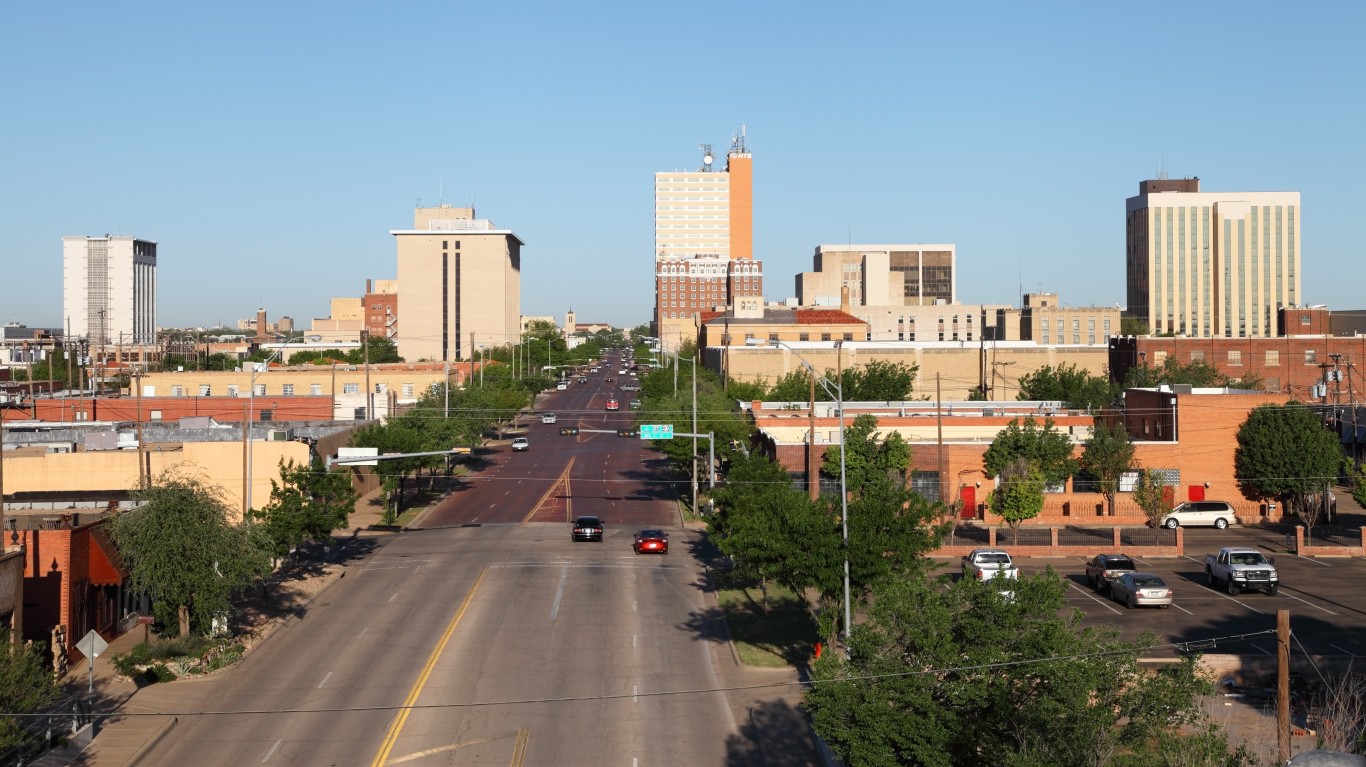
31. Lubbock, TX
> Days per year with 90 F+ temp.: 84
> Highest temp. on record (1947-2018): 114.0 F
> Normal mid-summer high: 92.8 F
> Normal year-round high: 74.3 F
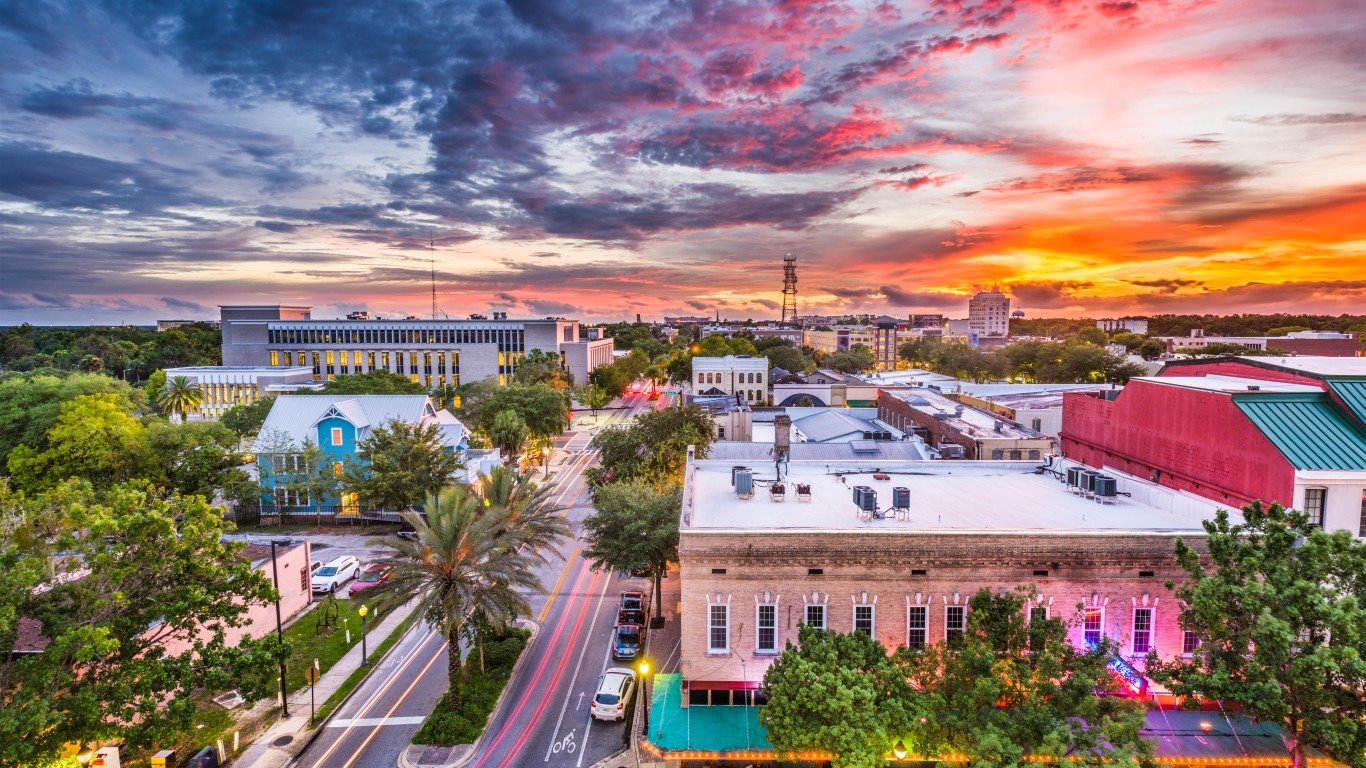
30. Gainesville, FL
> Days per year with 90 F+ temp.: 85
> Highest temp. on record (1960-2018): 103.0 F
> Normal mid-summer high: 90.9 F
> Normal year-round high: 80.0 F
[in-text-ad]
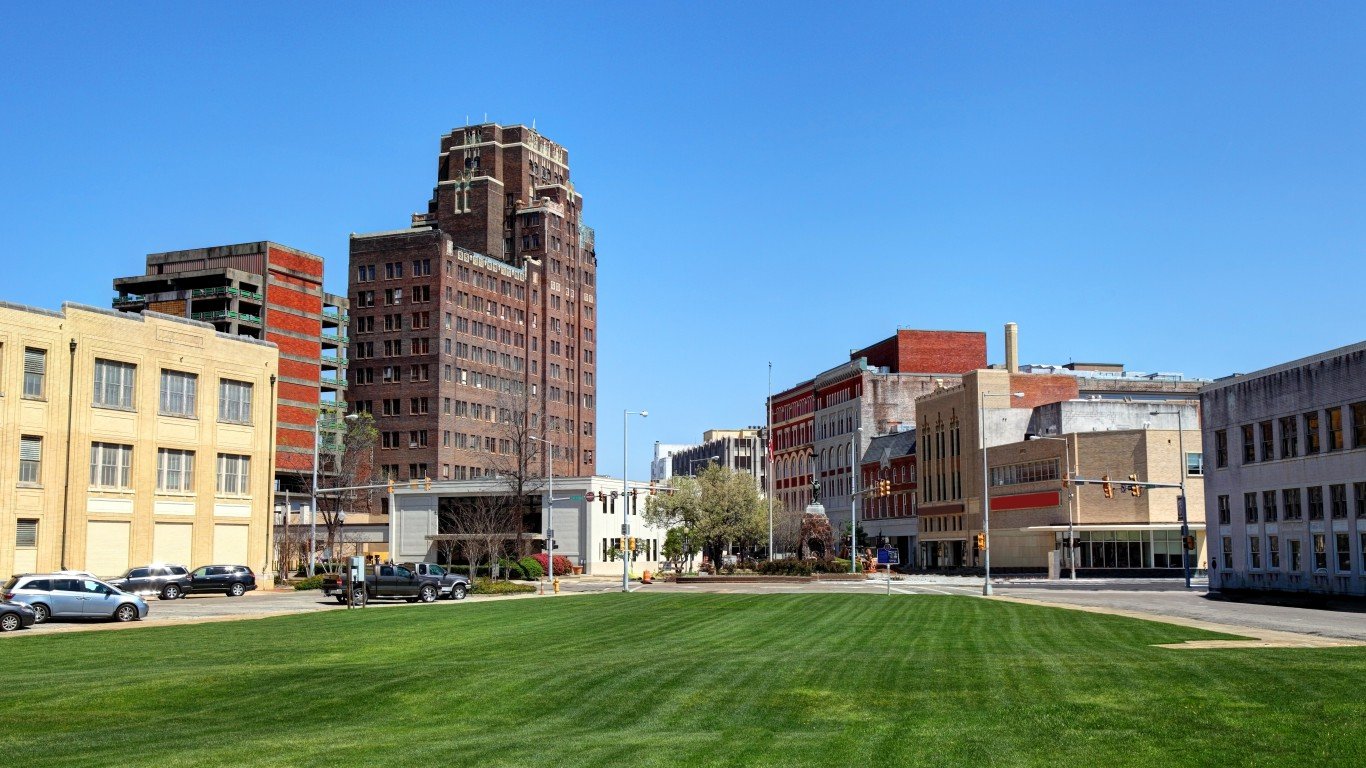
29. Meridian, MS
> Days per year with 90 F+ temp.: 85
> Highest temp. on record (1944-2018): 107.0 F
> Normal mid-summer high: 91.8 F
> Normal year-round high: 75.8 F
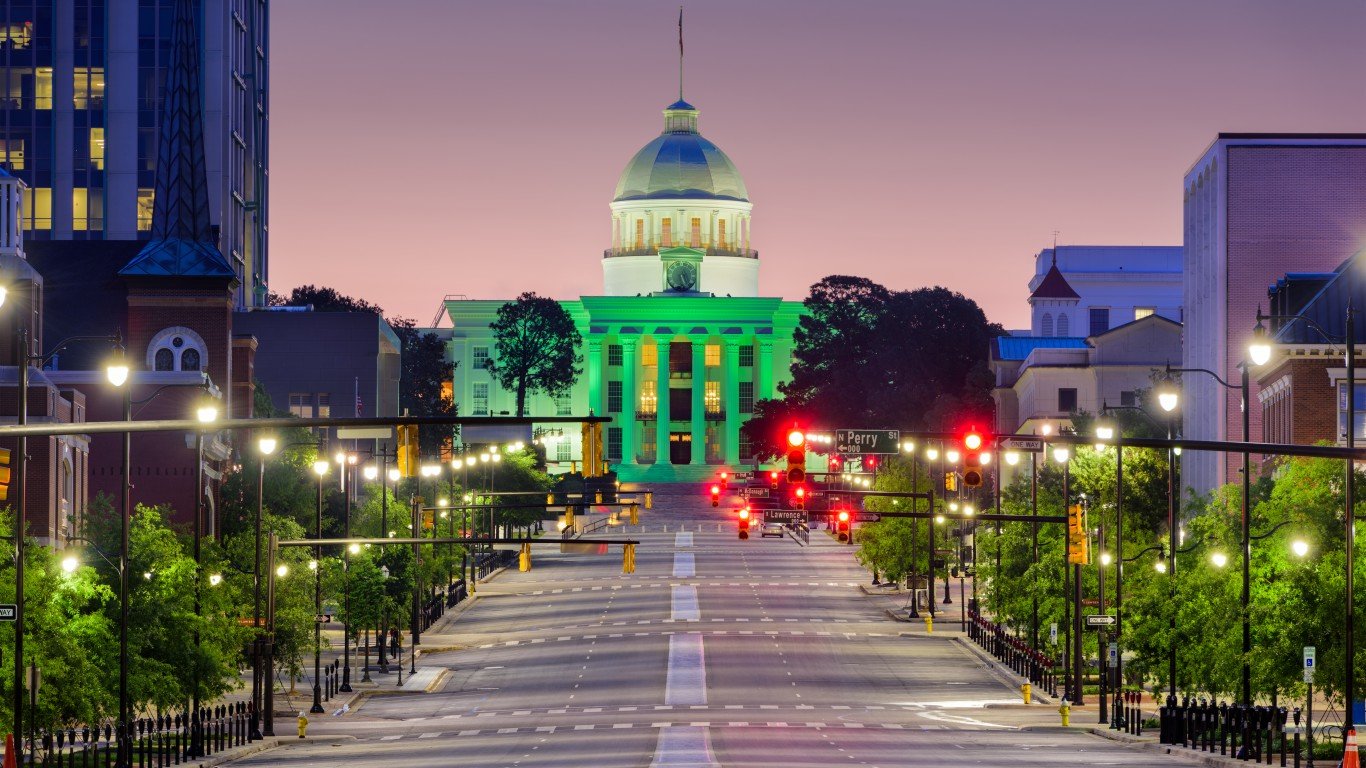
28. Montgomery, AL
> Days per year with 90 F+ temp.: 85
> Highest temp. on record (1948-2018): 106.0 F
> Normal mid-summer high: 92.1 F
> Normal year-round high: 76.5 F
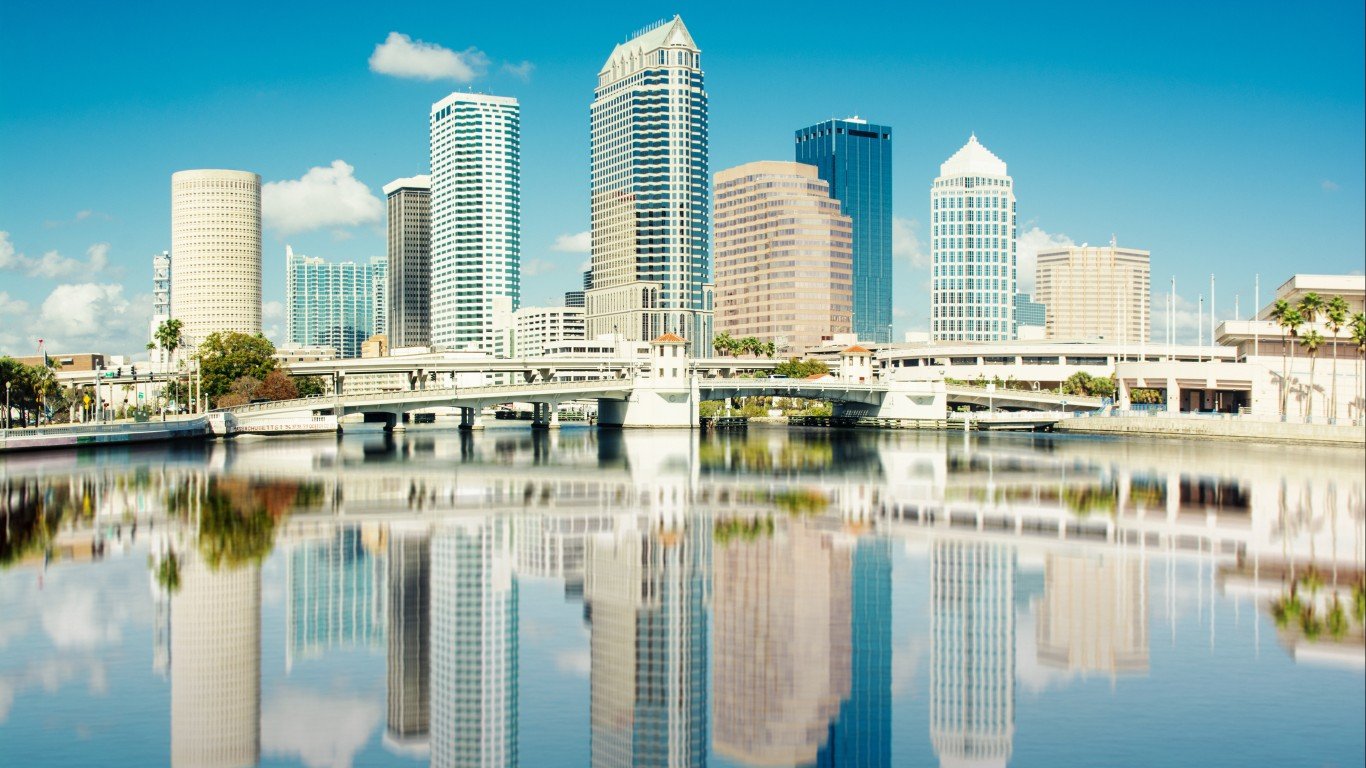
27. Tampa, FL
> Days per year with 90 F+ temp.: 87
> Highest temp. on record (1939-2018): 99.0 F
> Normal mid-summer high: 90.2 F
> Normal year-round high: 81.7 F
[in-text-ad-2]
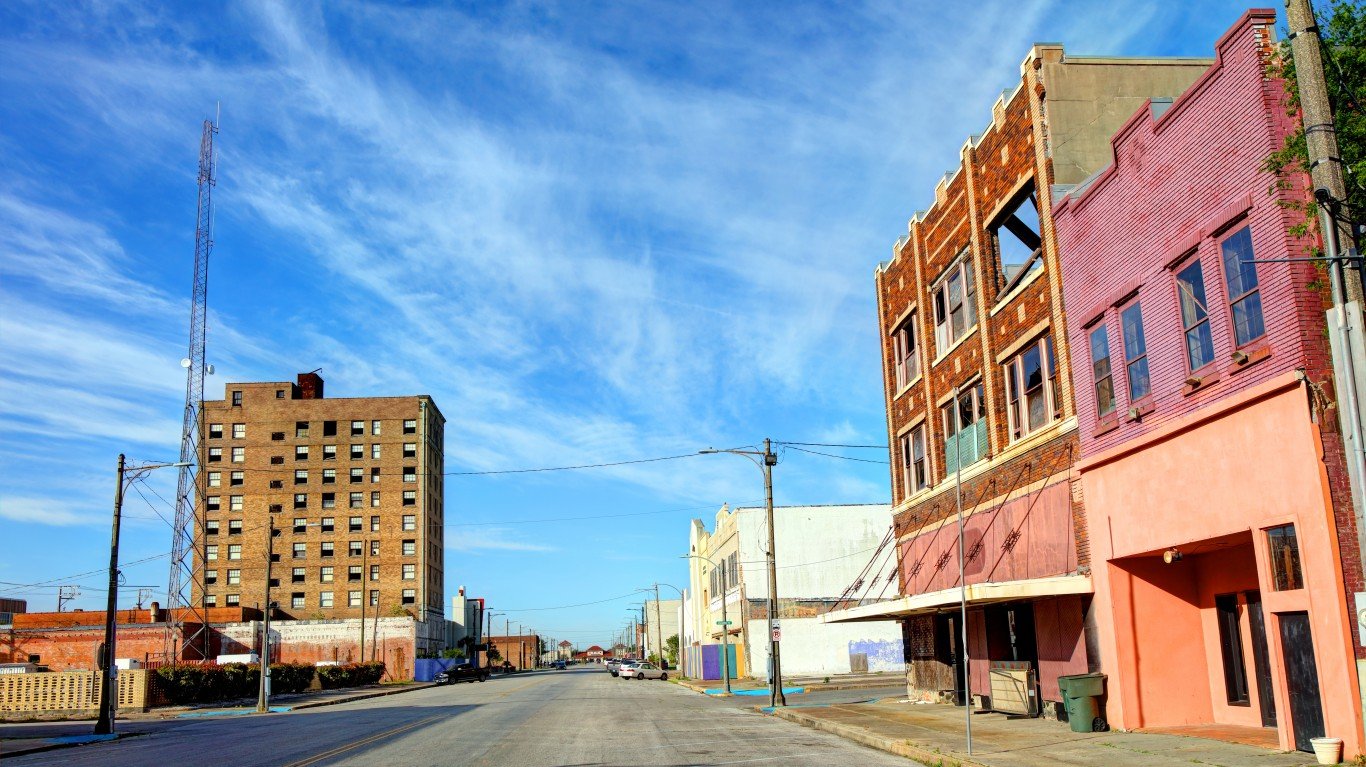
26. Port Arthur, TX
> Days per year with 90 F+ temp.: 87
> Highest temp. on record (1947-2018): 108.0 F
> Normal mid-summer high: 92.2 F
> Normal year-round high: 78.3 F
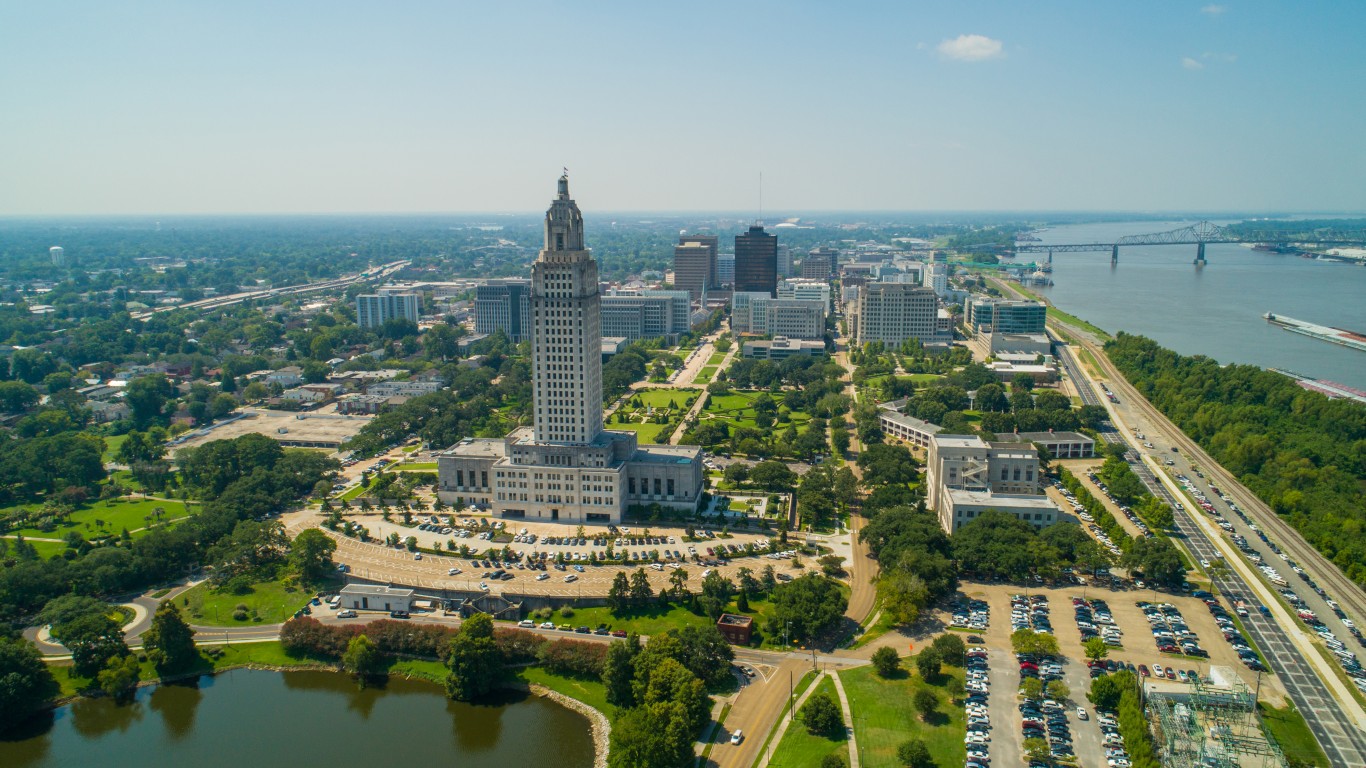
25. Baton Rouge, LA
> Days per year with 90 F+ temp.: 89
> Highest temp. on record (1930-2018): 105.0 F
> Normal mid-summer high: 92.5 F
> Normal year-round high: 78.9 F
[in-text-ad]
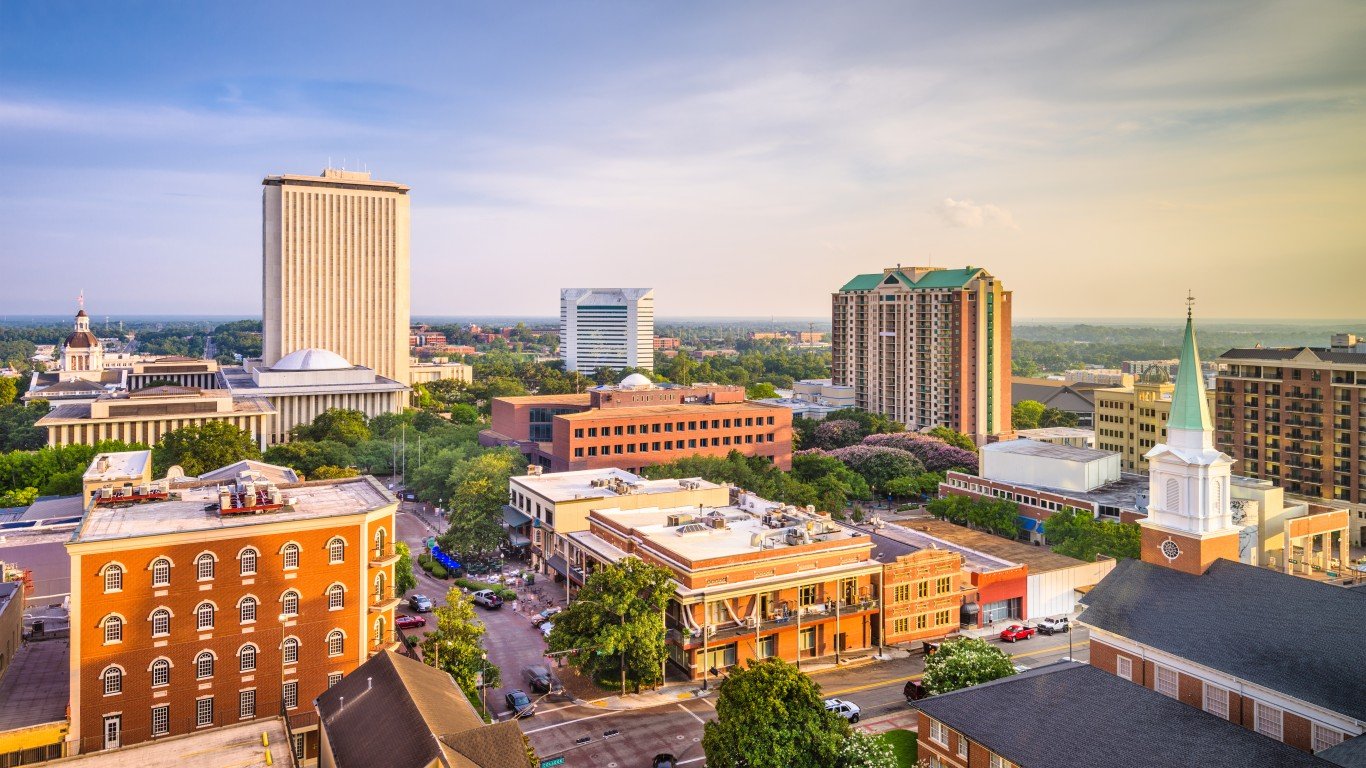
24. Tallahassee, FL
> Days per year with 90 F+ temp.: 91
> Highest temp. on record (1940-2018): 105.0 F
> Normal mid-summer high: 92.1 F
> Normal year-round high: 79.5 F
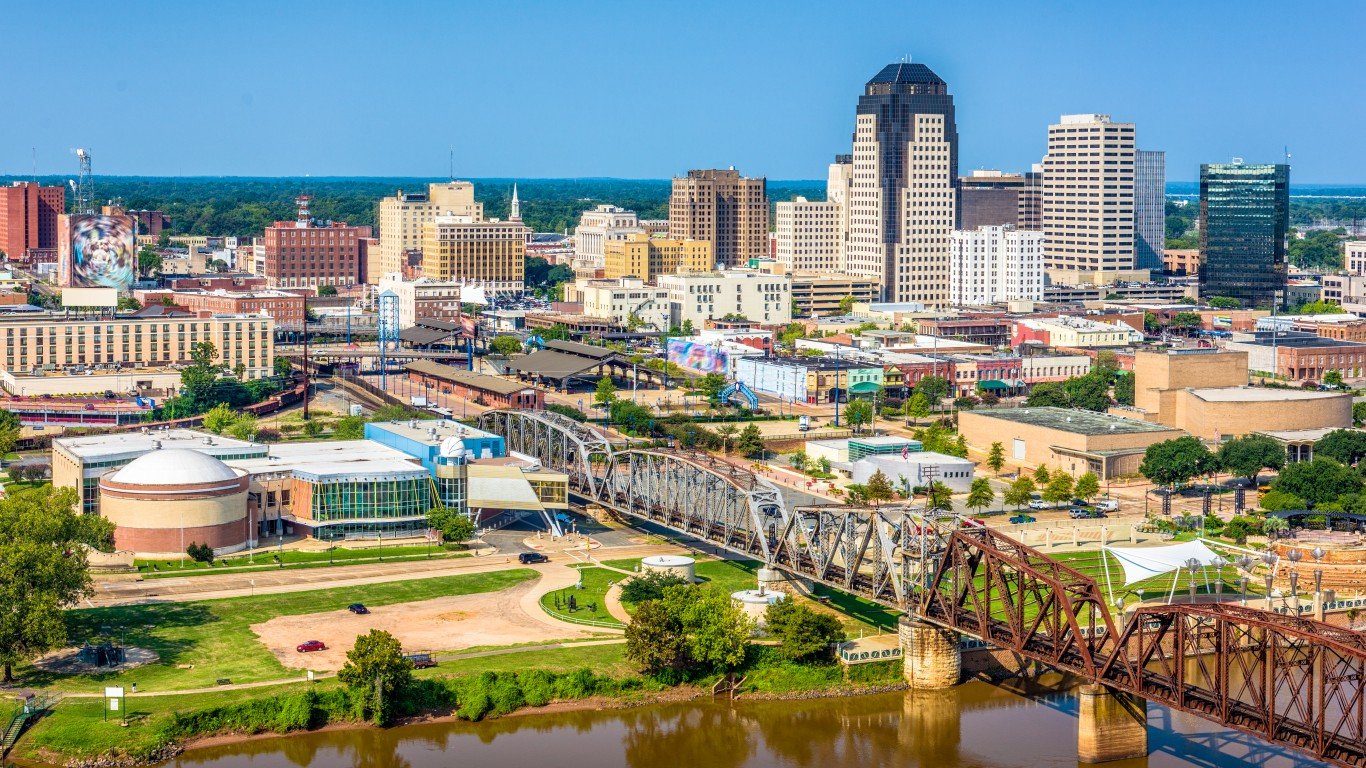
23. Shreveport, LA
> Days per year with 90 F+ temp.: 93
> Highest temp. on record (1939-2018): 109.0 F
> Normal mid-summer high: 93.4 F
> Normal year-round high: 75.8 F
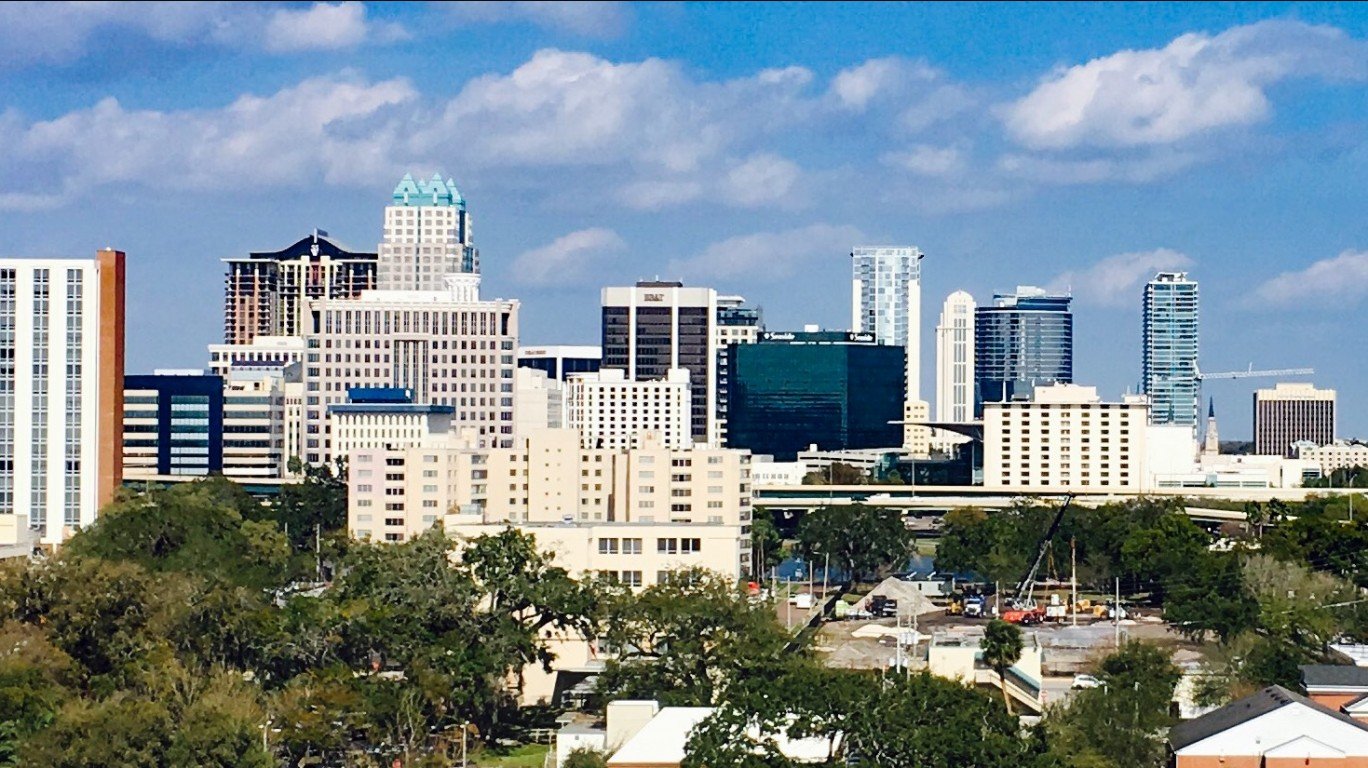
22. Orlando, FL
> Days per year with 90 F+ temp.: 98
> Highest temp. on record (1952-2018): 101.0 F
> Normal mid-summer high: 91.8 F
> Normal year-round high: 82.4 F
[in-text-ad-2]
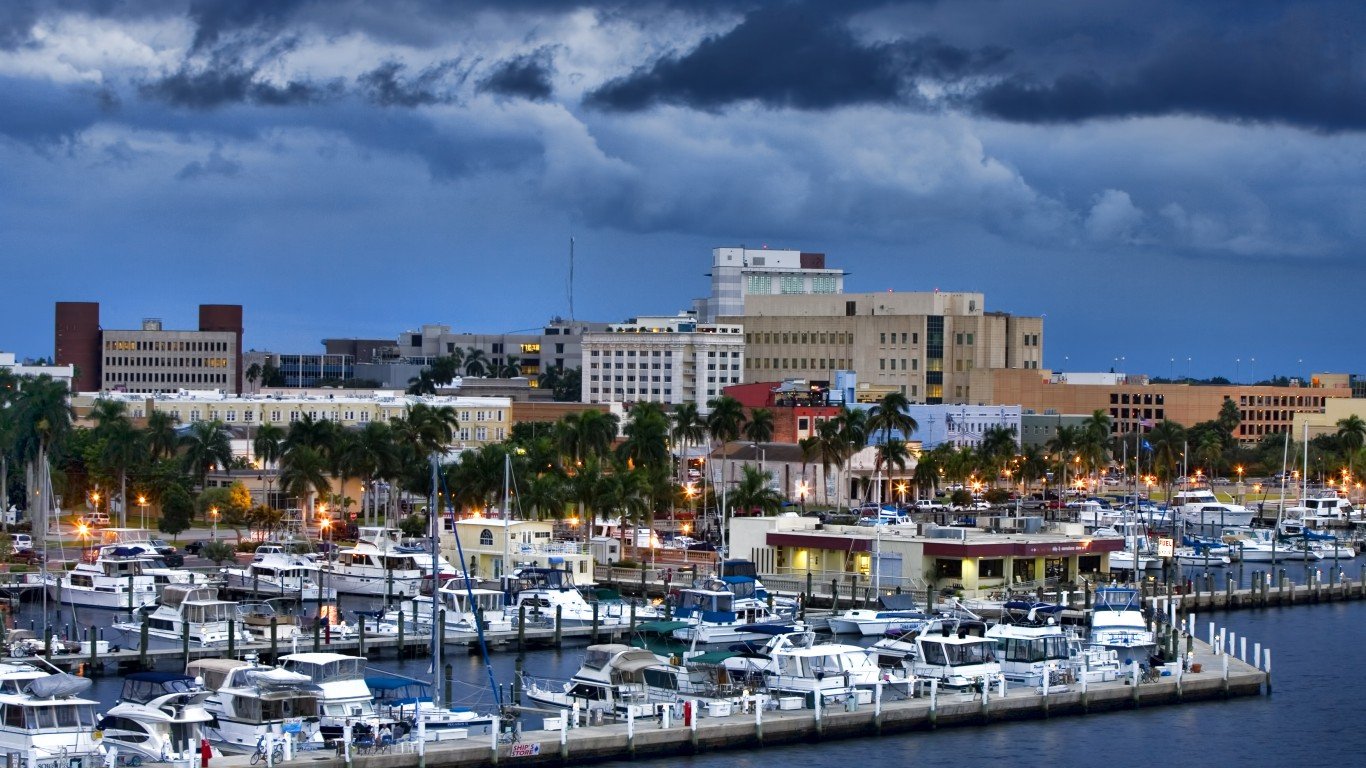
21. Fort Myers, FL
> Days per year with 90 F+ temp.: 99
> Highest temp. on record (1892-2018): 103.0 F
> Normal mid-summer high: 91.9 F
> Normal year-round high: 84.7 F
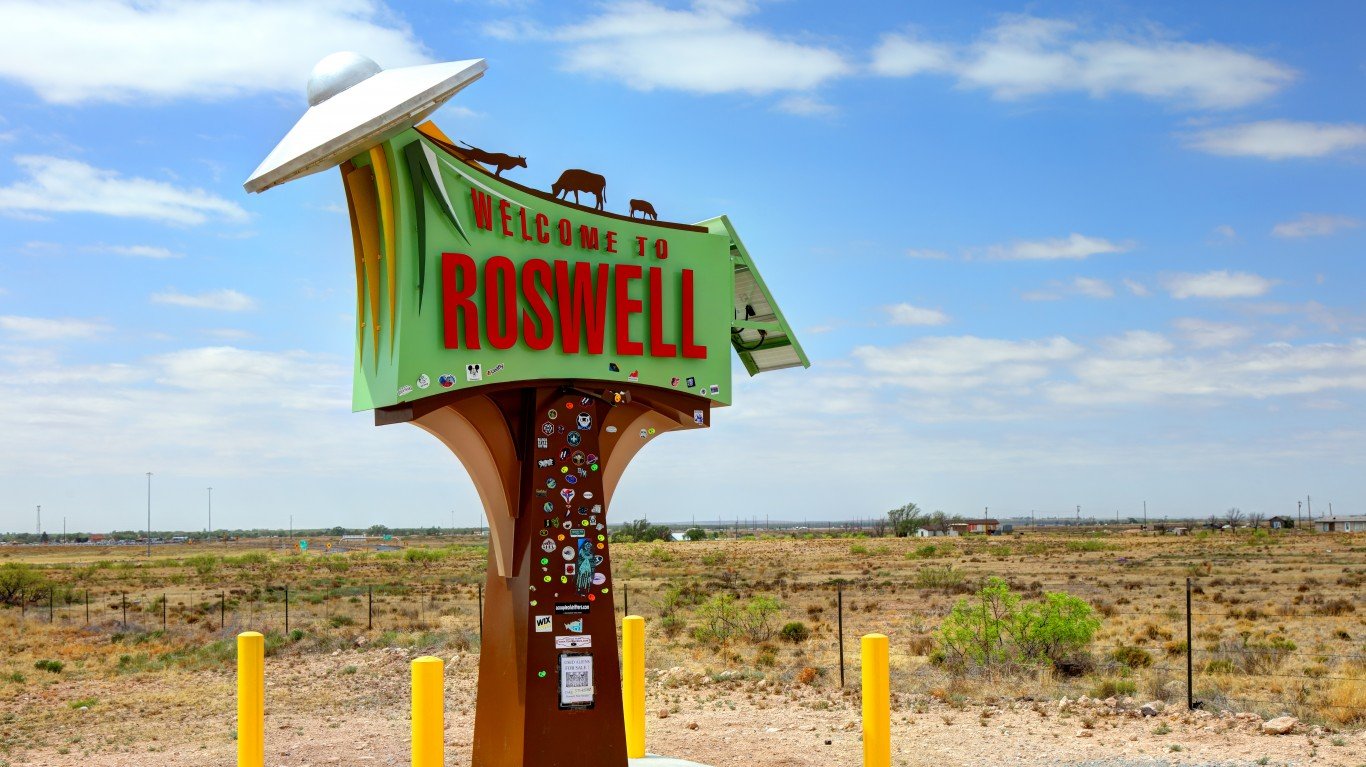
20. Roswell, NM
> Days per year with 90 F+ temp.: 99
> Highest temp. on record (1949-2018): 114.0 F
> Normal mid-summer high: 93.7 F
> Normal year-round high: 75.4 F
[in-text-ad]
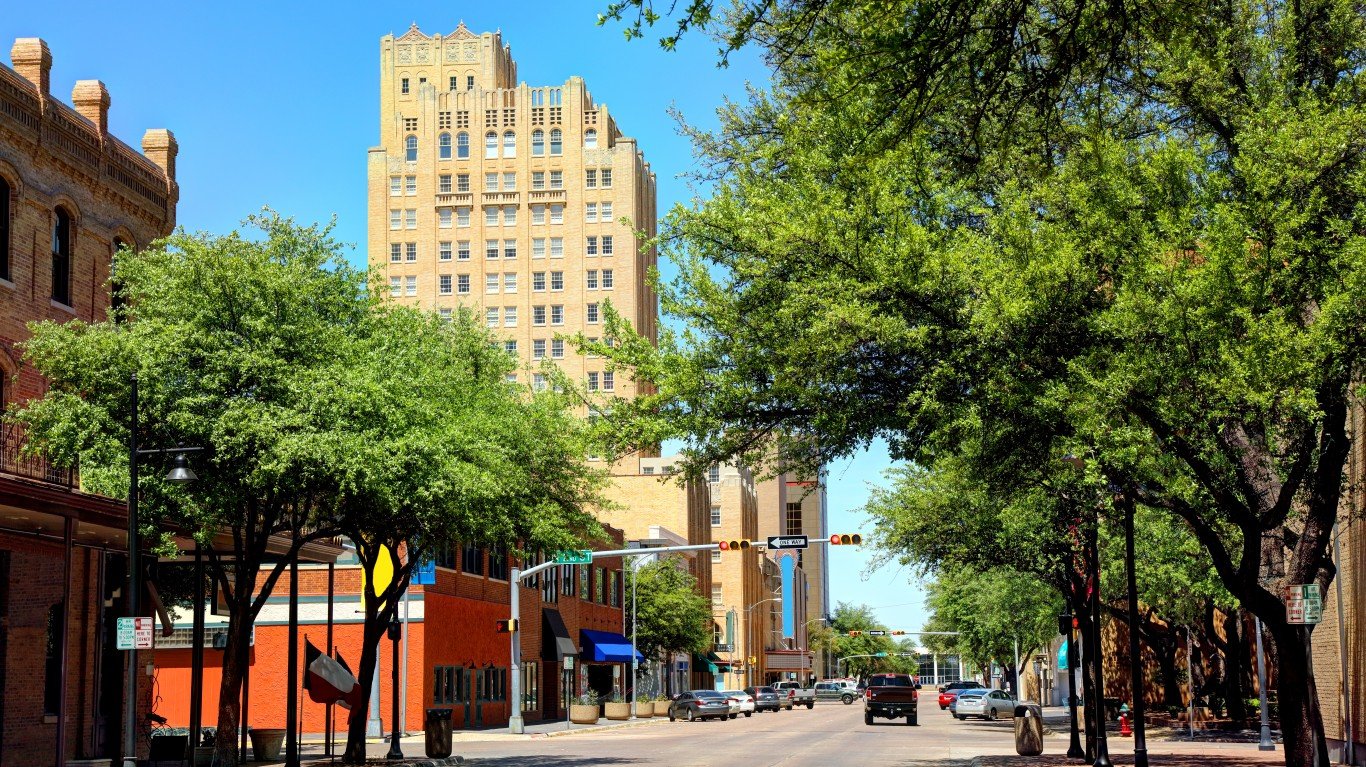
19. Abilene, TX
> Days per year with 90 F+ temp.: 101
> Highest temp. on record (1948-2018): 110.0 F
> Normal mid-summer high: 94.2 F
> Normal year-round high: 76.2 F
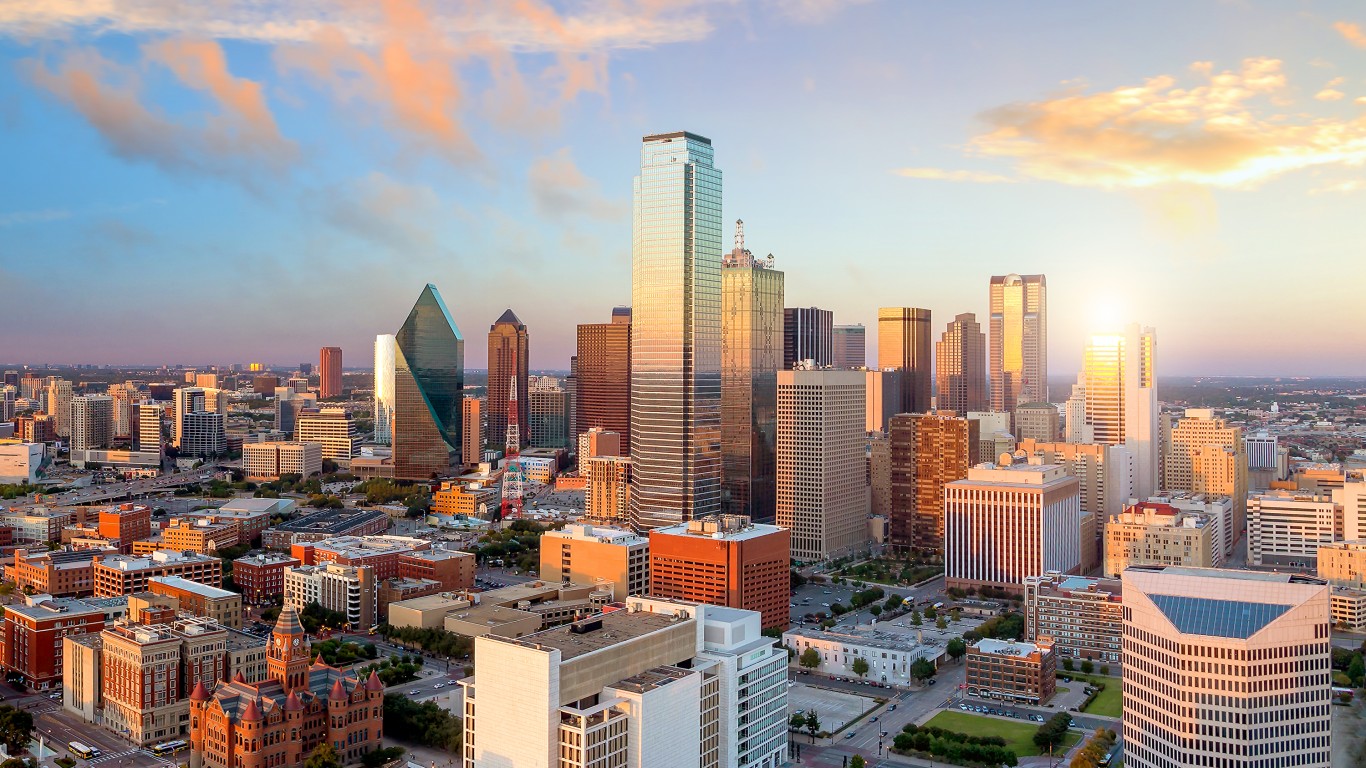
18. Dallas, TX
> Days per year with 90 F+ temp.: 103
> Highest temp. on record (1939-2018): 112.0 F
> Normal mid-summer high: N/A
> Normal year-round high: 76.6 F
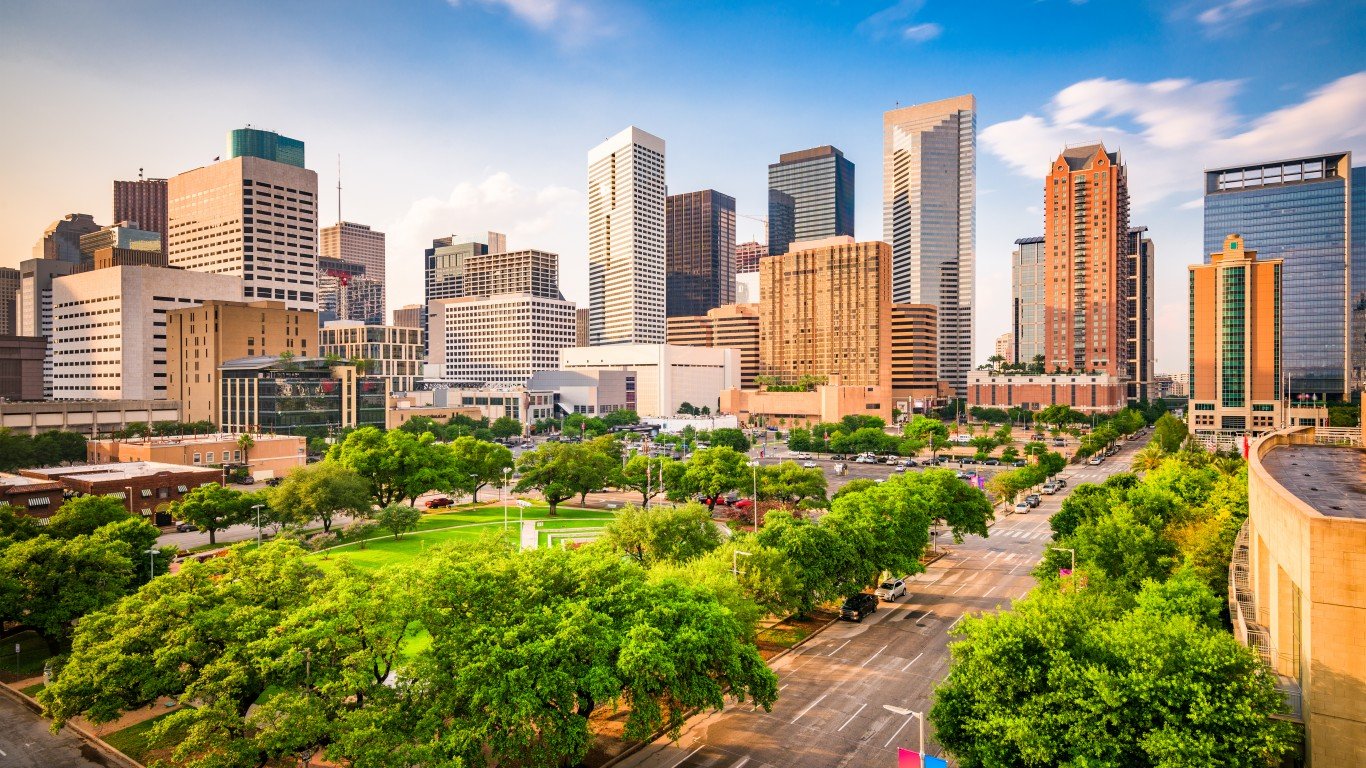
17. Houston, TX
> Days per year with 90 F+ temp.: 104
> Highest temp. on record (1969-2018): 109.0 F
> Normal mid-summer high: 92.3 F
> Normal year-round high: 78.5 F
[in-text-ad-2]
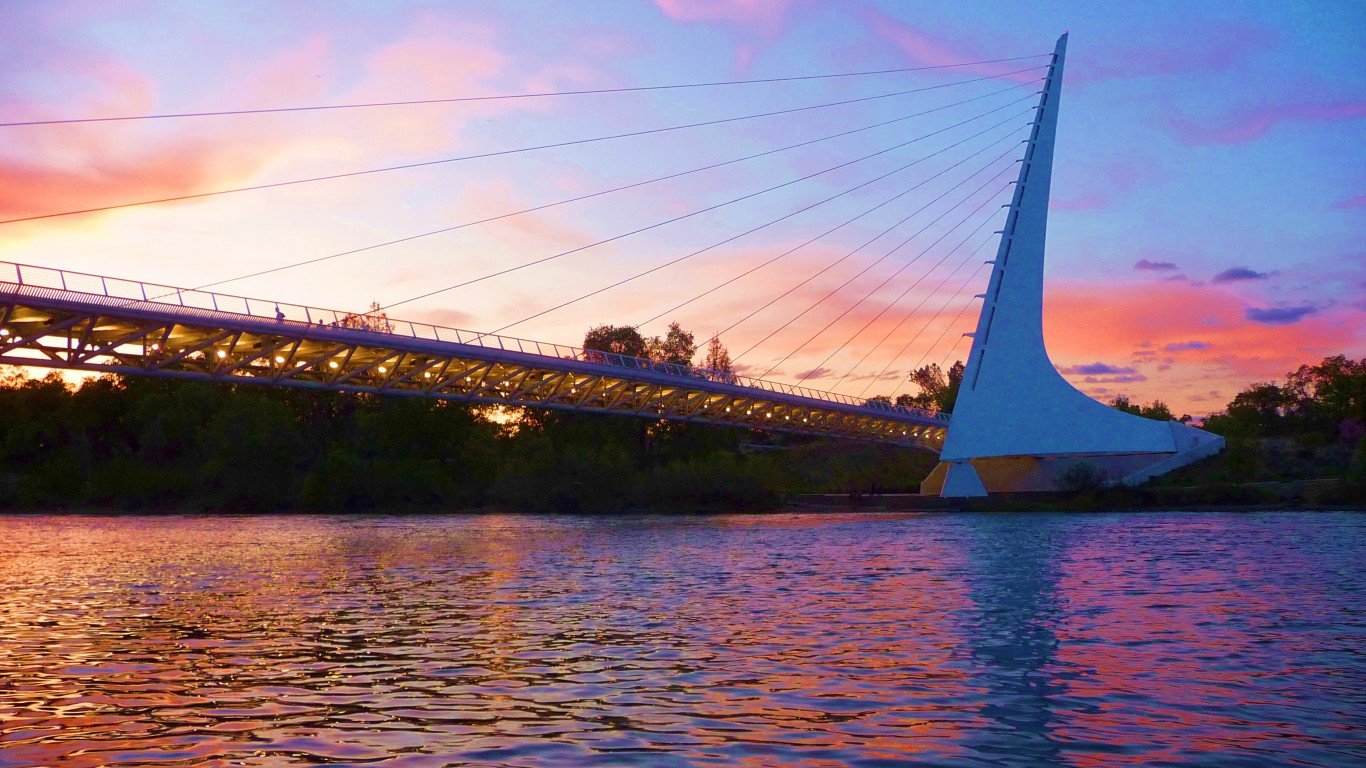
16. Redding, CA
> Days per year with 90 F+ temp.: 105
> Highest temp. on record (1986-2018): 118.0 F
> Normal mid-summer high: 94.9 F
> Normal year-round high: 72.1 F
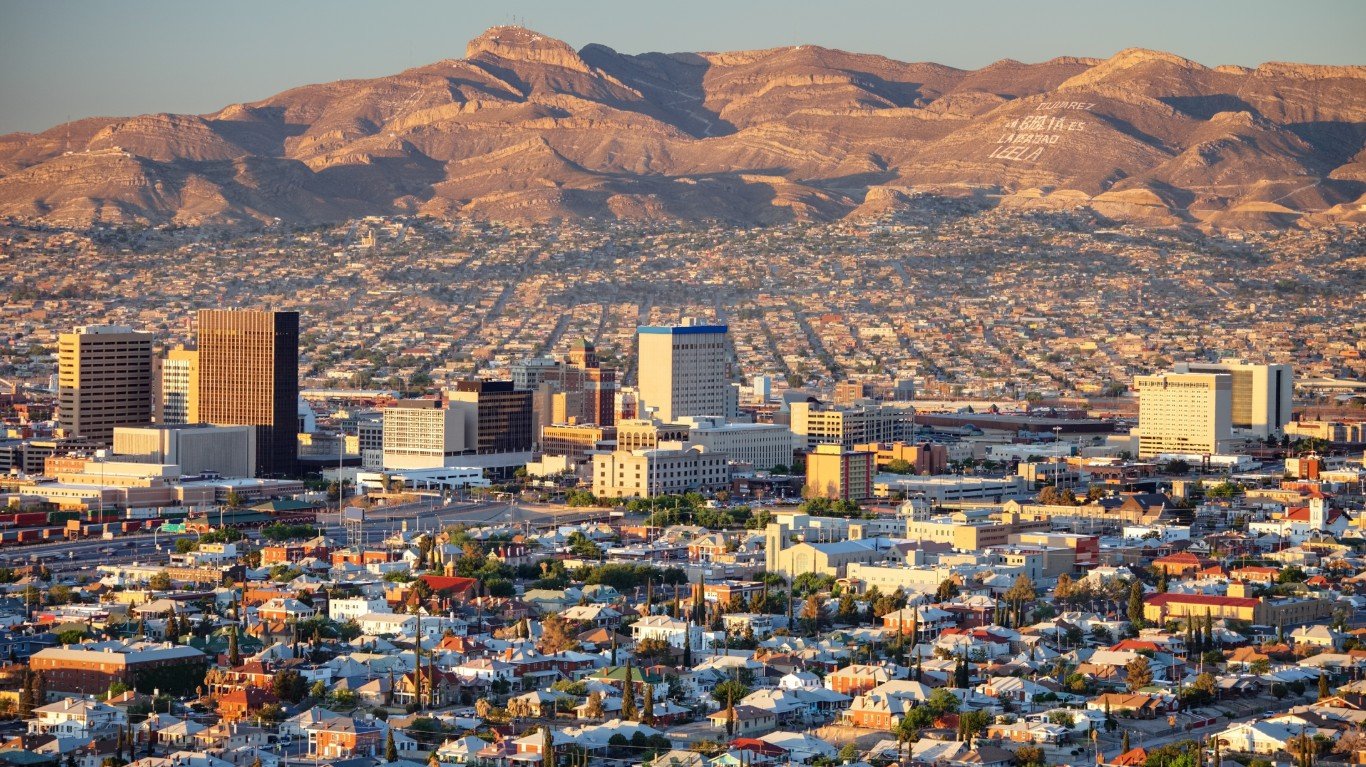
15. El Paso, TX
> Days per year with 90 F+ temp.: 107
> Highest temp. on record (1938-2018): 114.0 F
> Normal mid-summer high: 95.5 F
> Normal year-round high: 77.4 F
[in-text-ad]
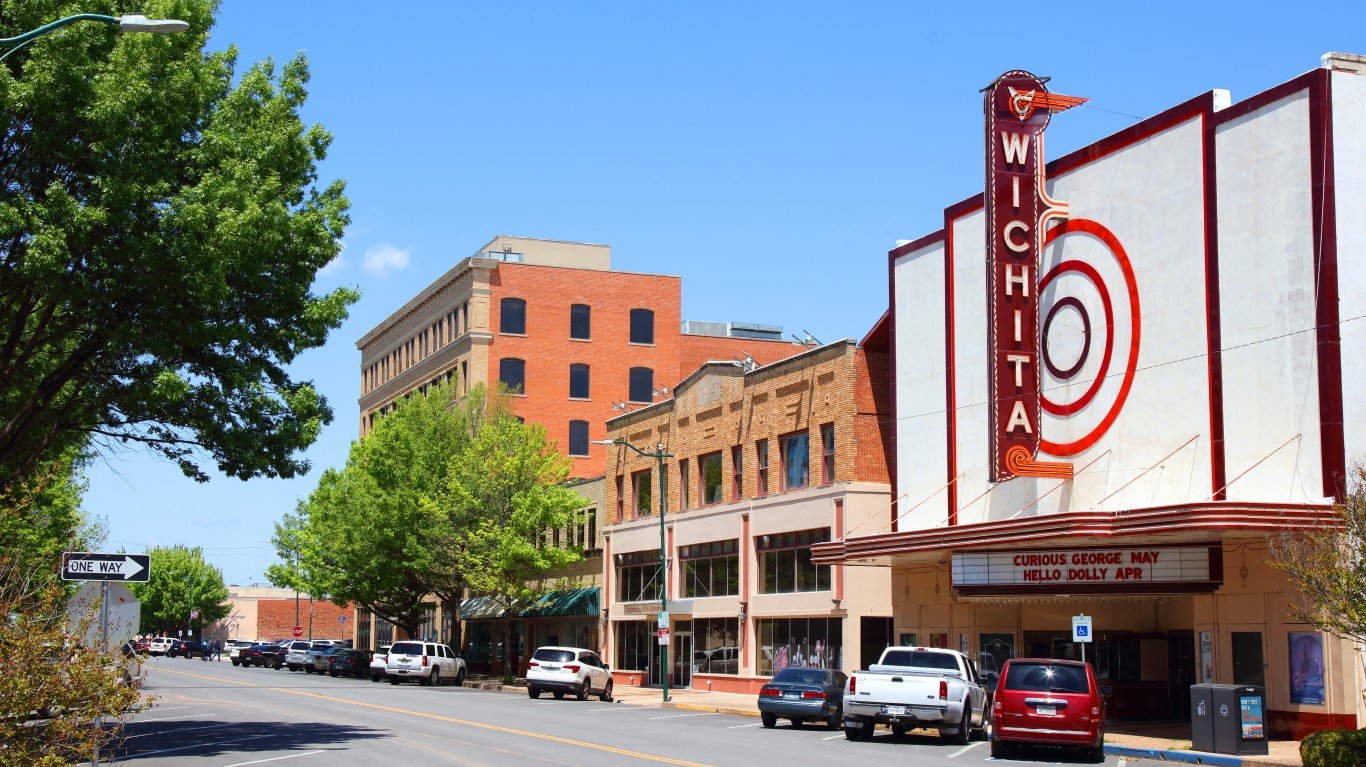
14. Wichita Falls, TX
> Days per year with 90 F+ temp.: 107
> Highest temp. on record (1907-2018): 117.0 F
> Normal mid-summer high: 96.9 F
> Normal year-round high: 75.7 F
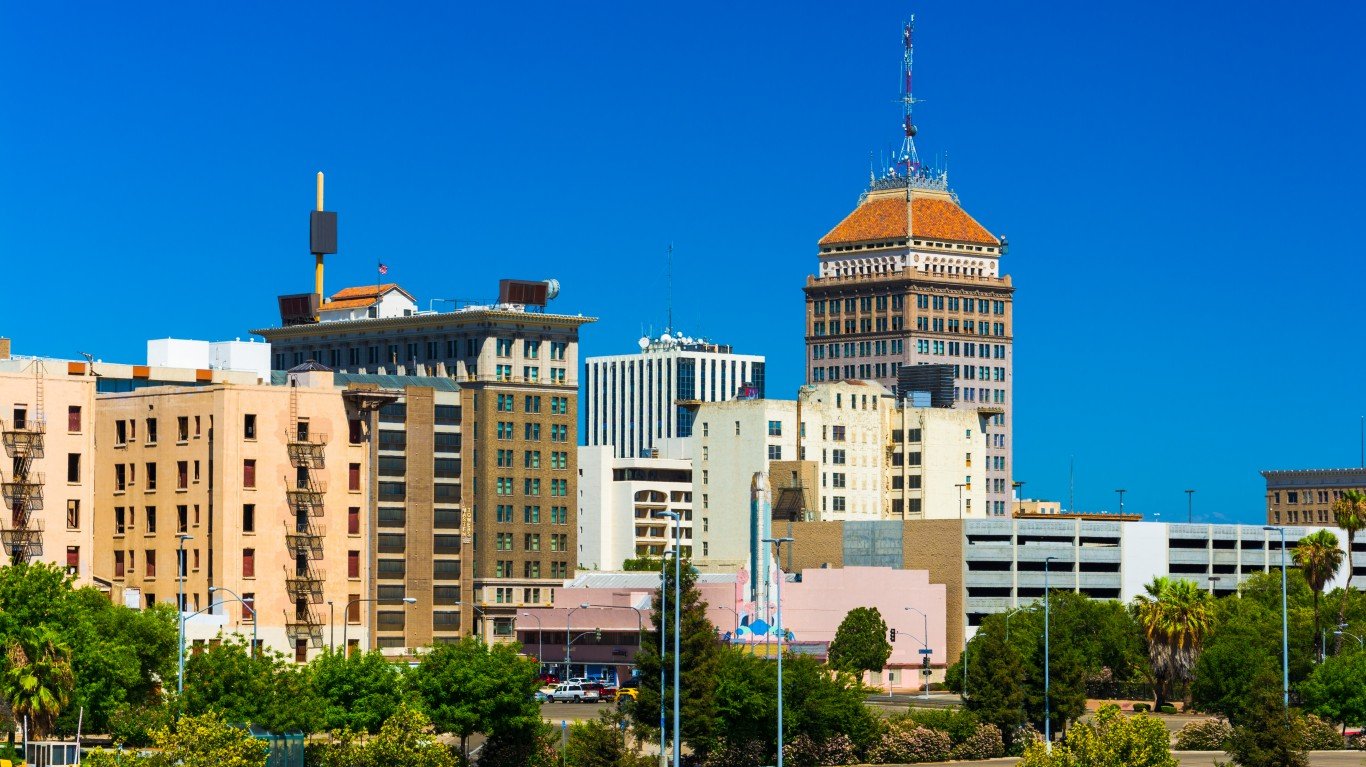
13. Fresno, CA
> Days per year with 90 F+ temp.: 108
> Highest temp. on record (1948-2018): 113.0 F
> Normal mid-summer high: 98.4 F
> Normal year-round high: 76.7 F
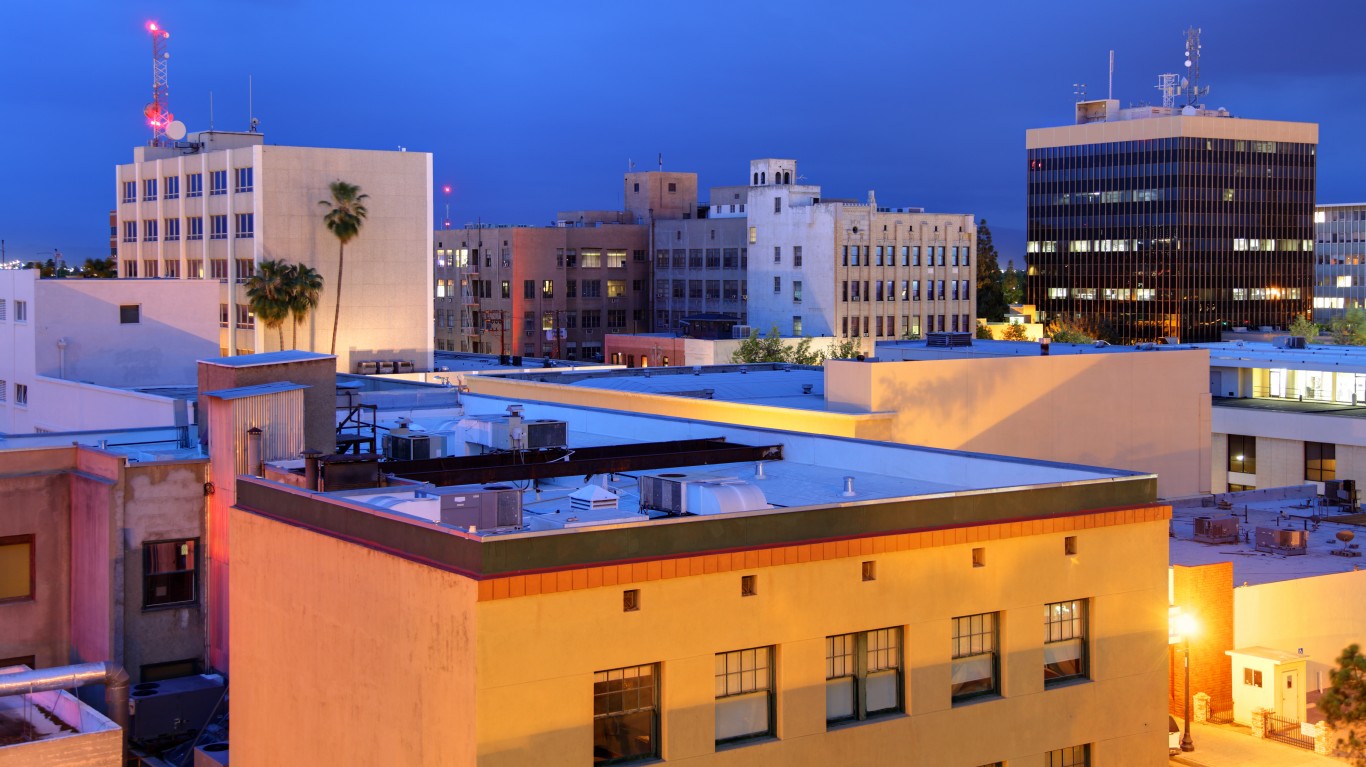
12. Bakersfield, CA
> Days per year with 90 F+ temp.: 110
> Highest temp. on record (1937-2018): 115.0 F
> Normal mid-summer high: 97.1 F
> Normal year-round high: 76.8 F
[in-text-ad-2]
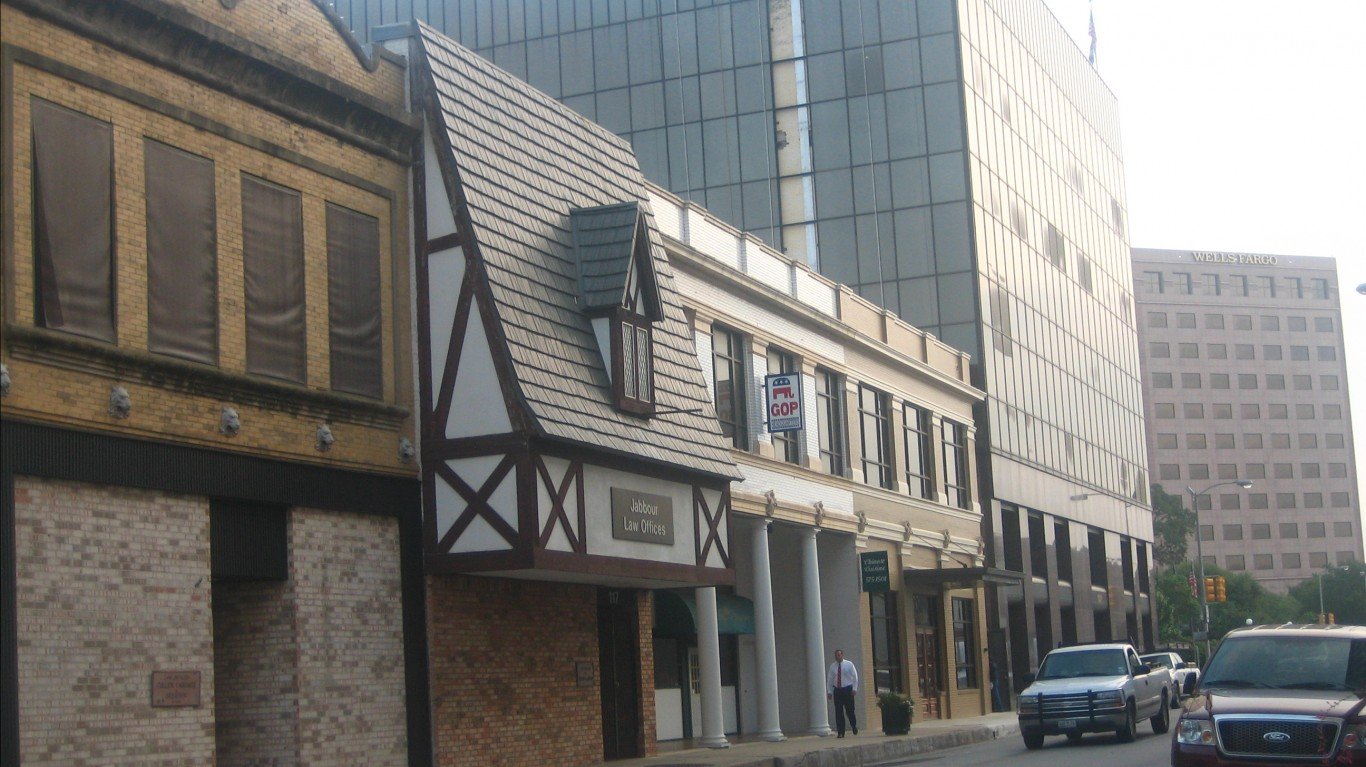
11. Victoria, TX
> Days per year with 90 F+ temp.: 111
> Highest temp. on record (1953-2018): 111.0 F
> Normal mid-summer high: 95.0 F
> Normal year-round high: 80.7 F
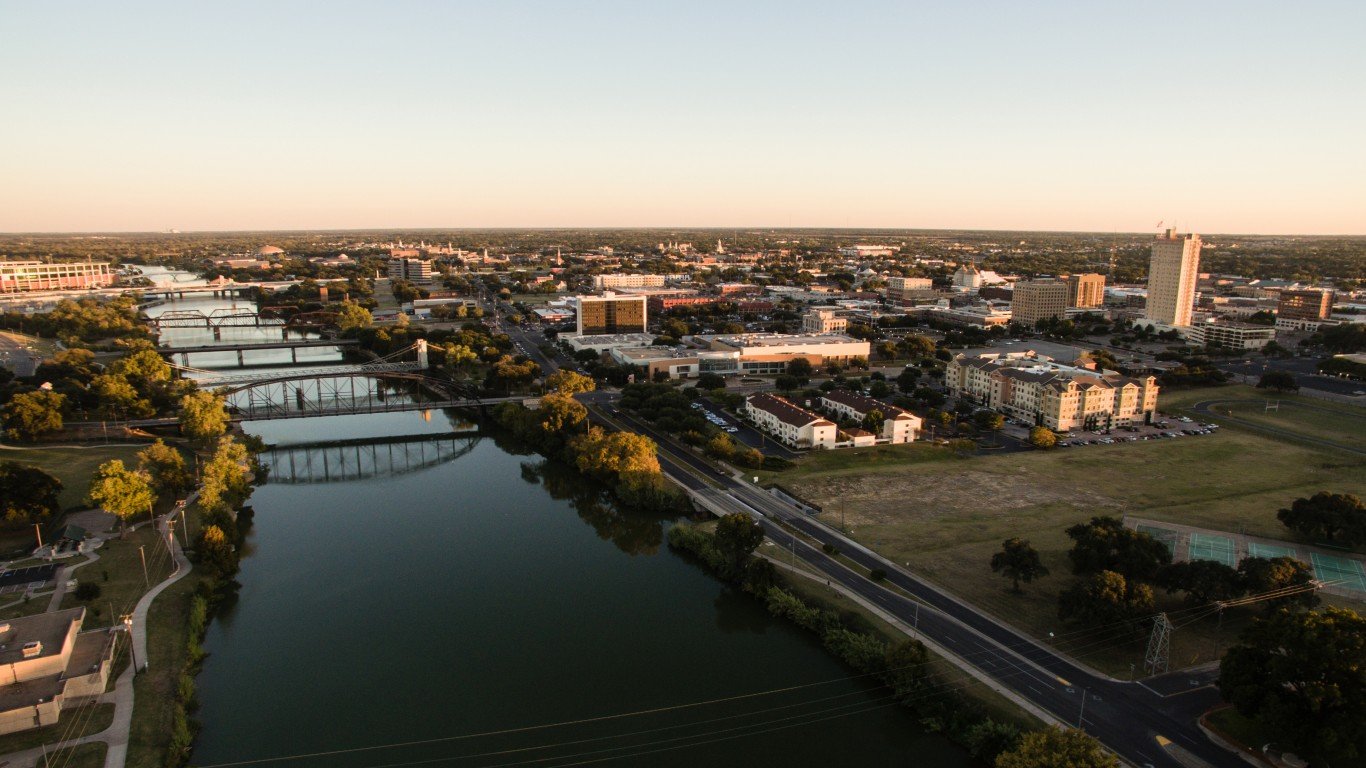
10. Waco, TX
> Days per year with 90 F+ temp.: 111
> Highest temp. on record (1941-2018): 114.0 F
> Normal mid-summer high: 96.8 F
> Normal year-round high: 77.8 F
[in-text-ad]
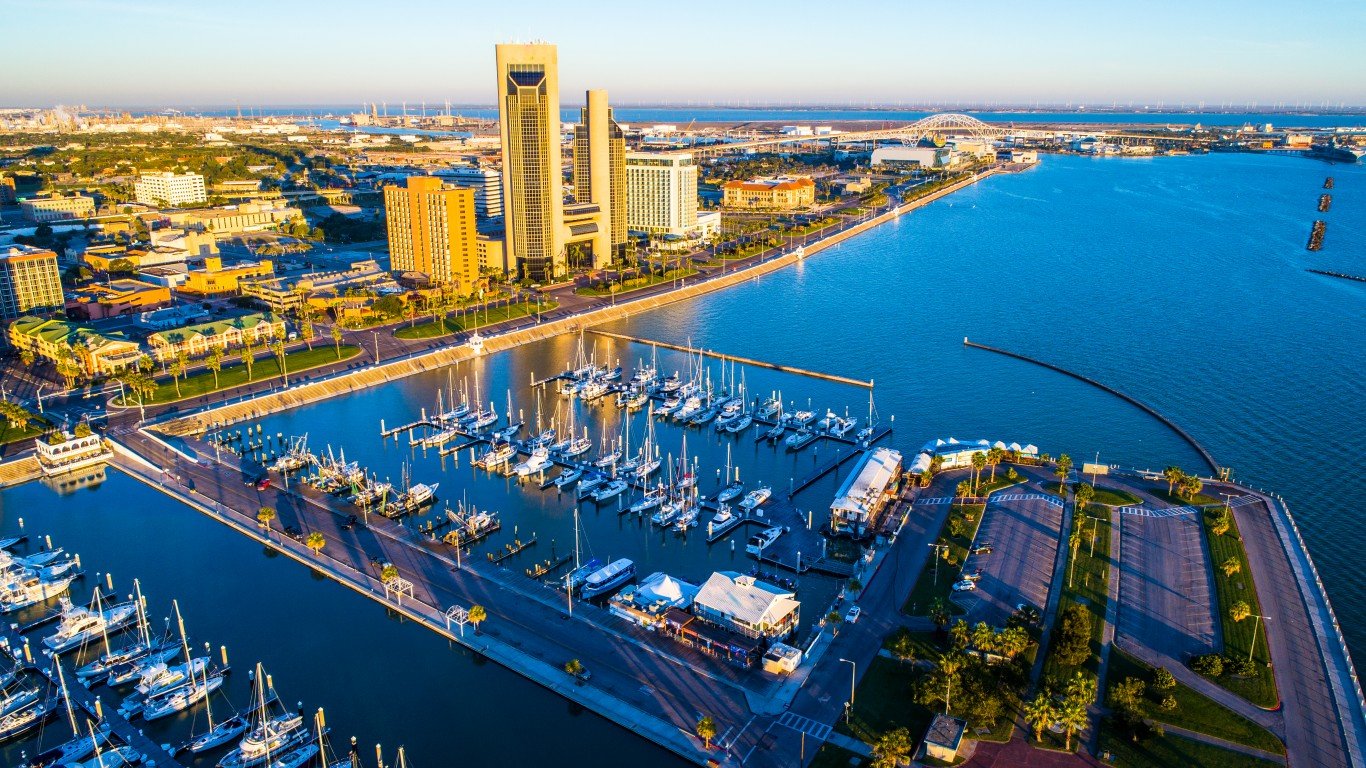
9. Corpus Christi, TX
> Days per year with 90 F+ temp.: 112
> Highest temp. on record (1948-2018): 109.0 F
> Normal mid-summer high: 94.4 F
> Normal year-round high: 81.6 F
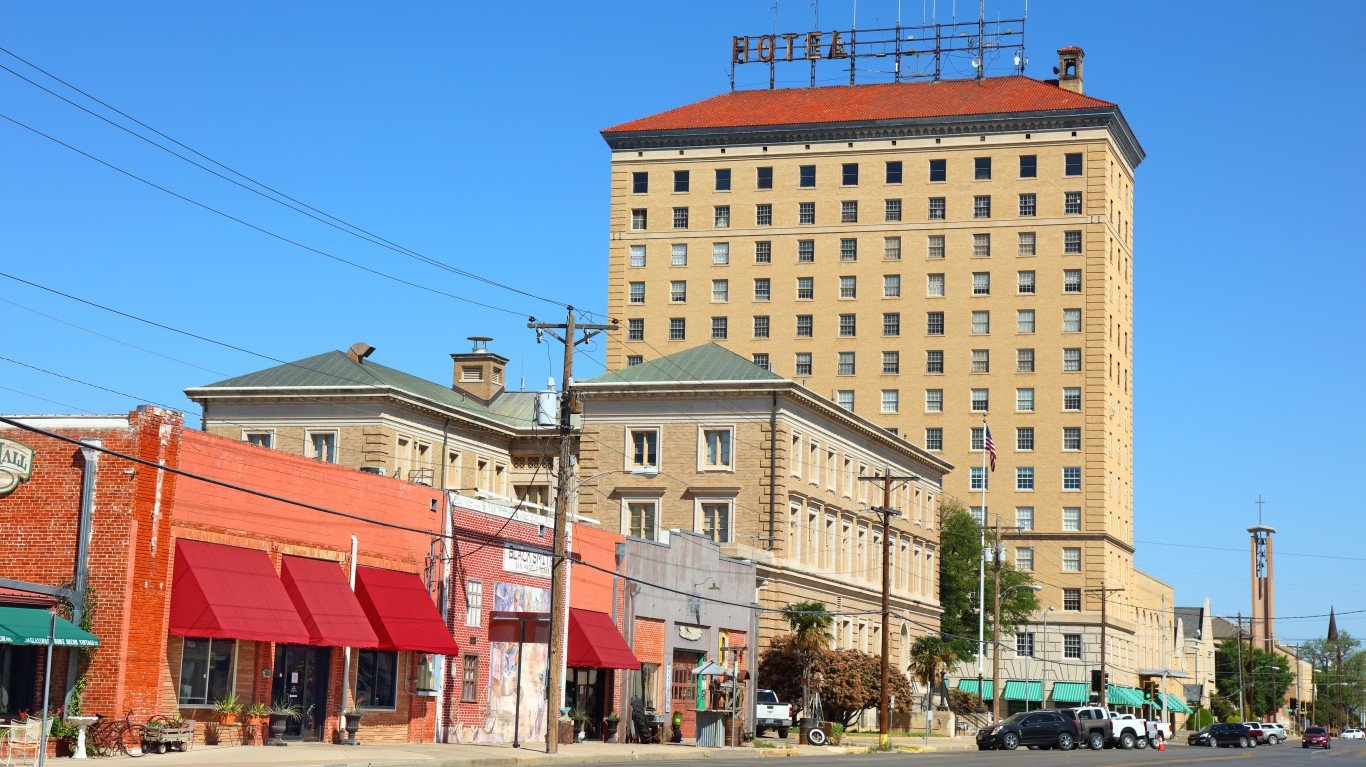
8. San Angelo, TX
> Days per year with 90 F+ temp.: 114
> Highest temp. on record (1907-2018): 111.0 F
> Normal mid-summer high: 95.1 F
> Normal year-round high: 78.2 F
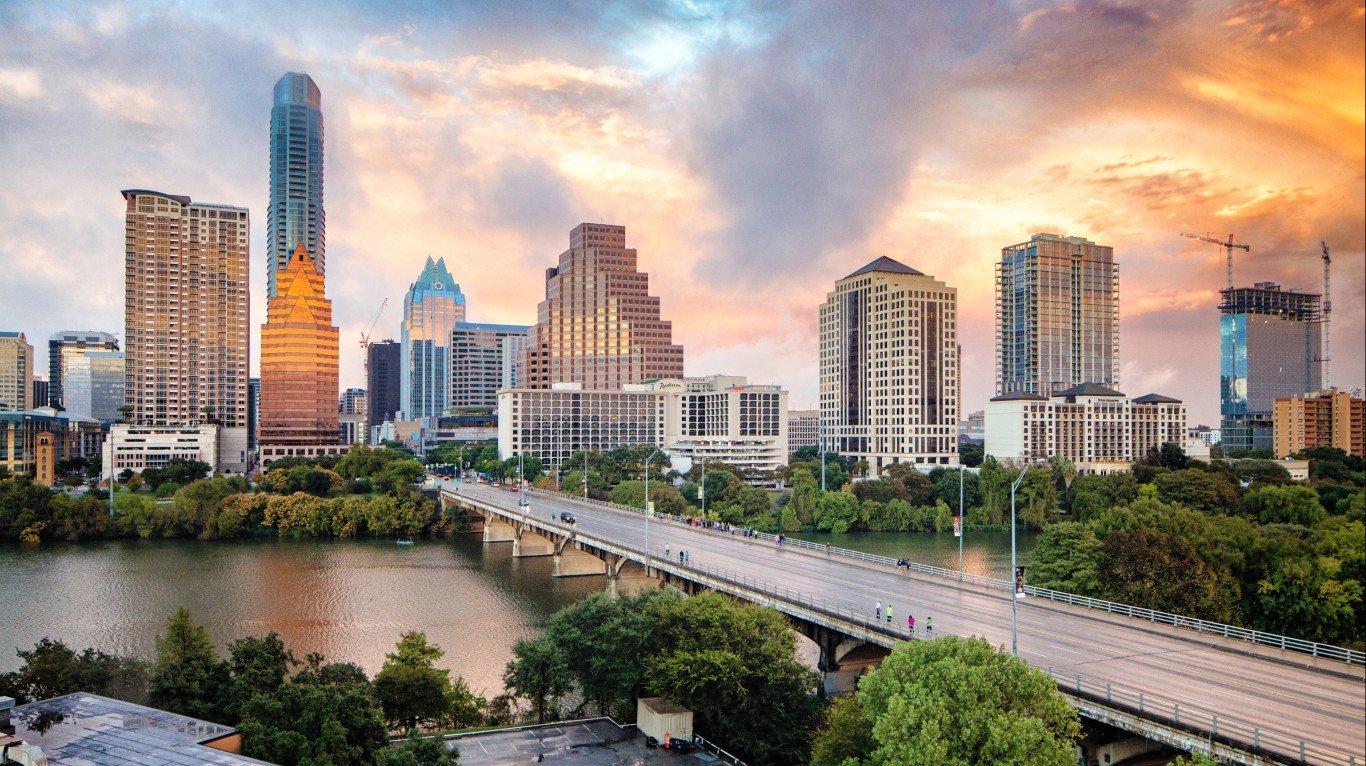
7. Austin, TX
> Days per year with 90 F+ temp.: 114
> Highest temp. on record (1938-2018): 112.0 F
> Normal mid-summer high: N/A
> Normal year-round high: 79.7 F
[in-text-ad-2]
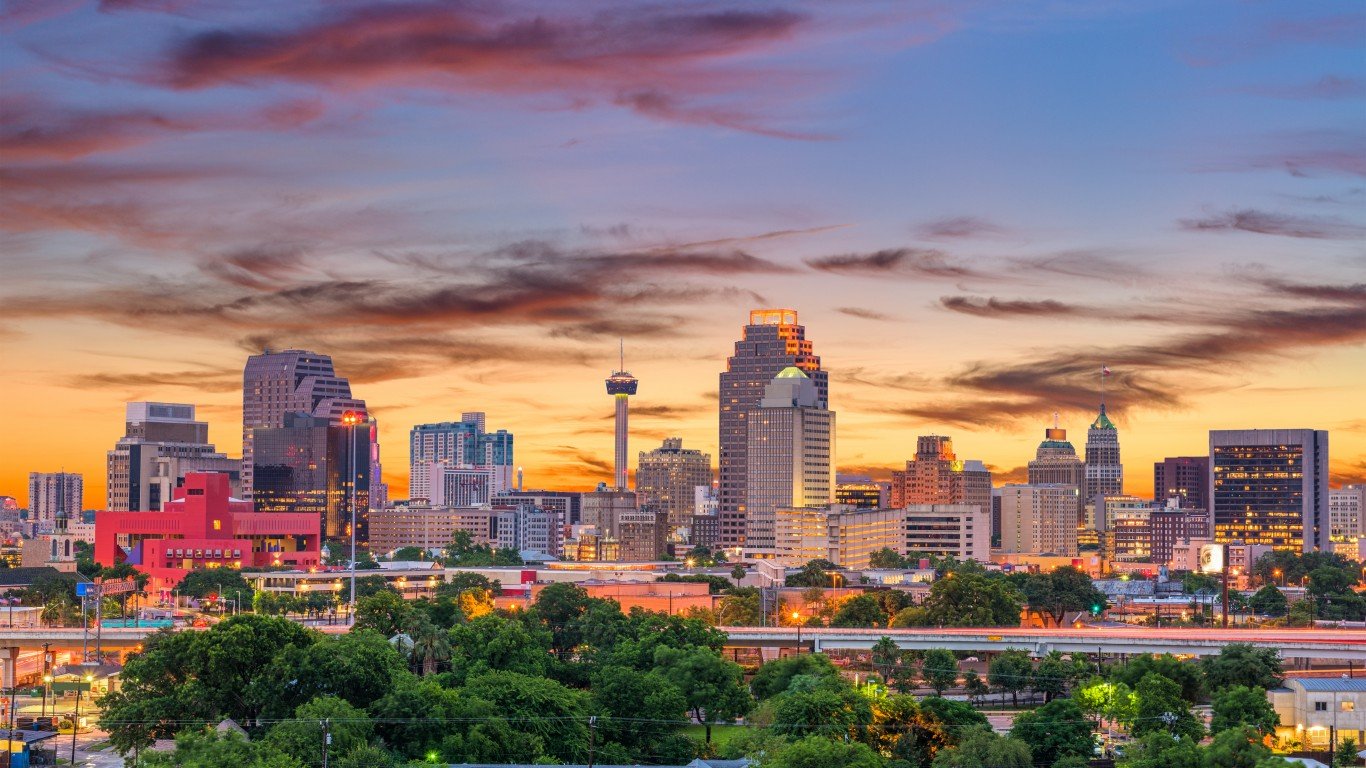
6. San Antonio, TX
> Days per year with 90 F+ temp.: 116
> Highest temp. on record (1946-2018): 111.0 F
> Normal mid-summer high: 97.5 F
> Normal year-round high: 80.7 F
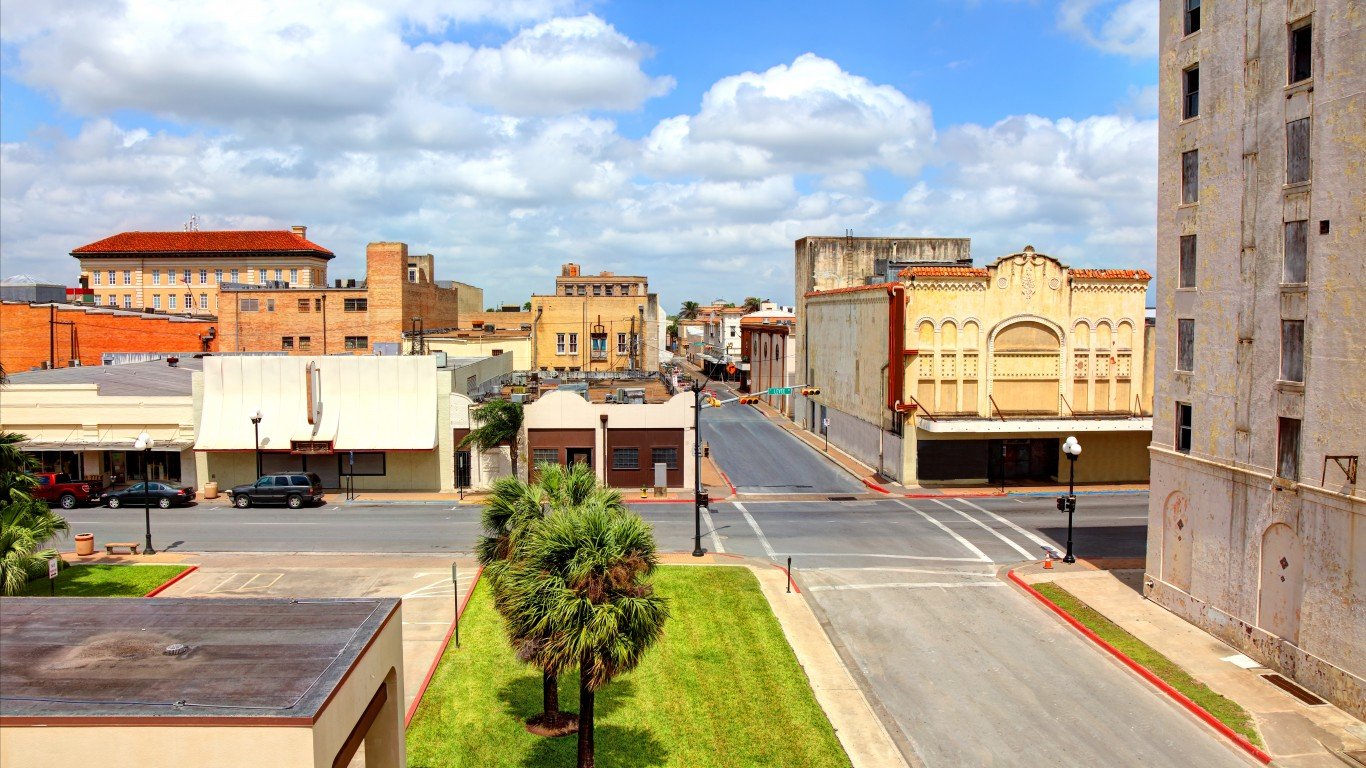
5. Brownsville, TX
> Days per year with 90 F+ temp.: 125
> Highest temp. on record (1898-2018): 106.0 F
> Normal mid-summer high: 94.4 F
> Normal year-round high: 83.5 F
[in-text-ad]
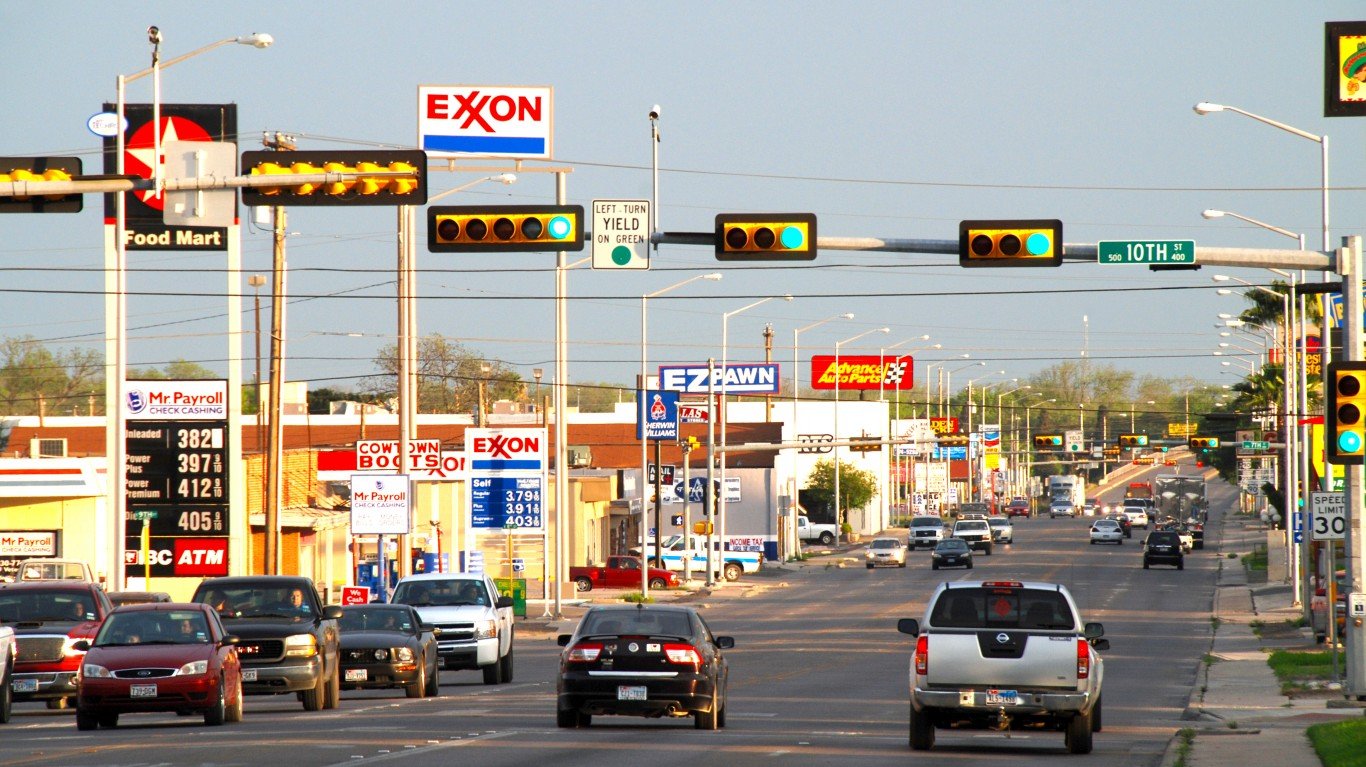
4. Del Rio, TX
> Days per year with 90 F+ temp.: 134
> Highest temp. on record (1951-2018): 112.0 F
> Normal mid-summer high: 97.1 F
> Normal year-round high: 81.6 F
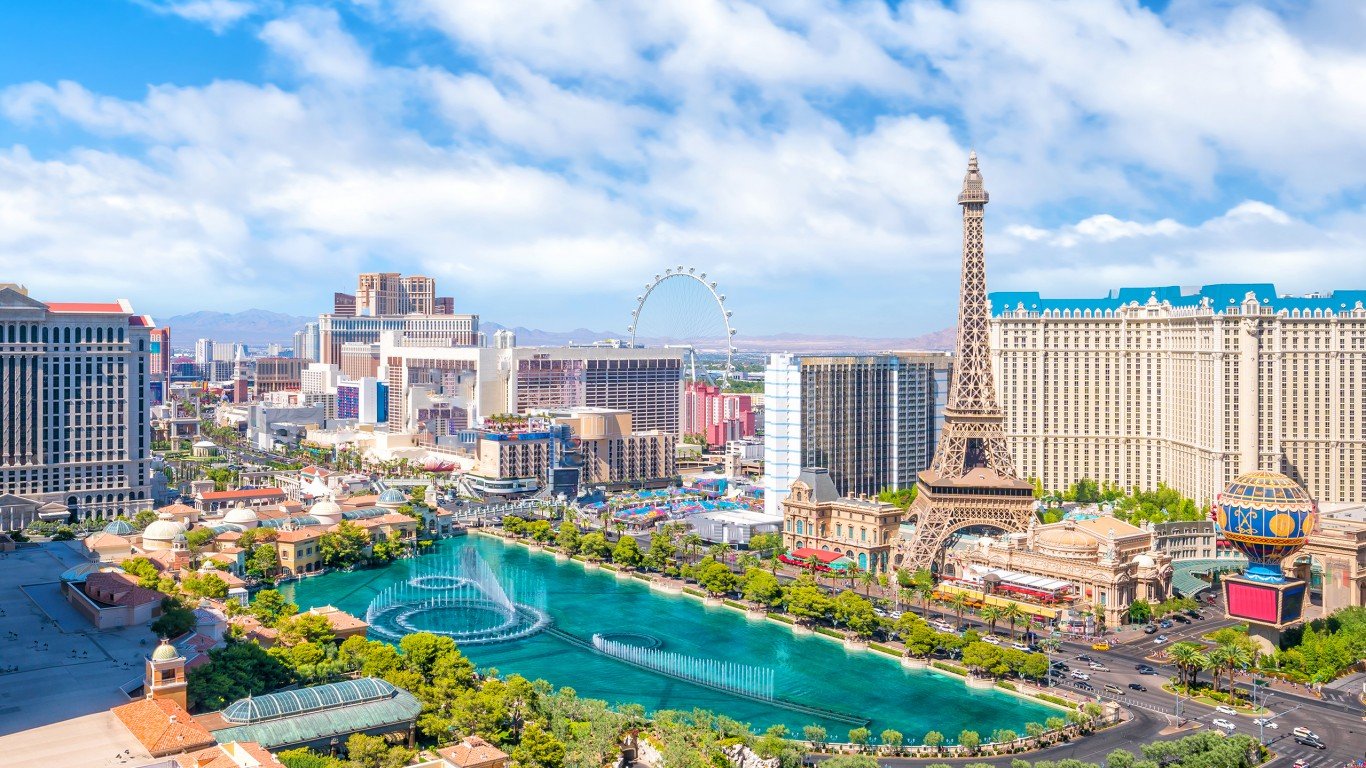
3. Las Vegas, NV
> Days per year with 90 F+ temp.: 135
> Highest temp. on record (1948-2018): 117.0 F
> Normal mid-summer high: 104.1 F
> Normal year-round high: 79.6 F
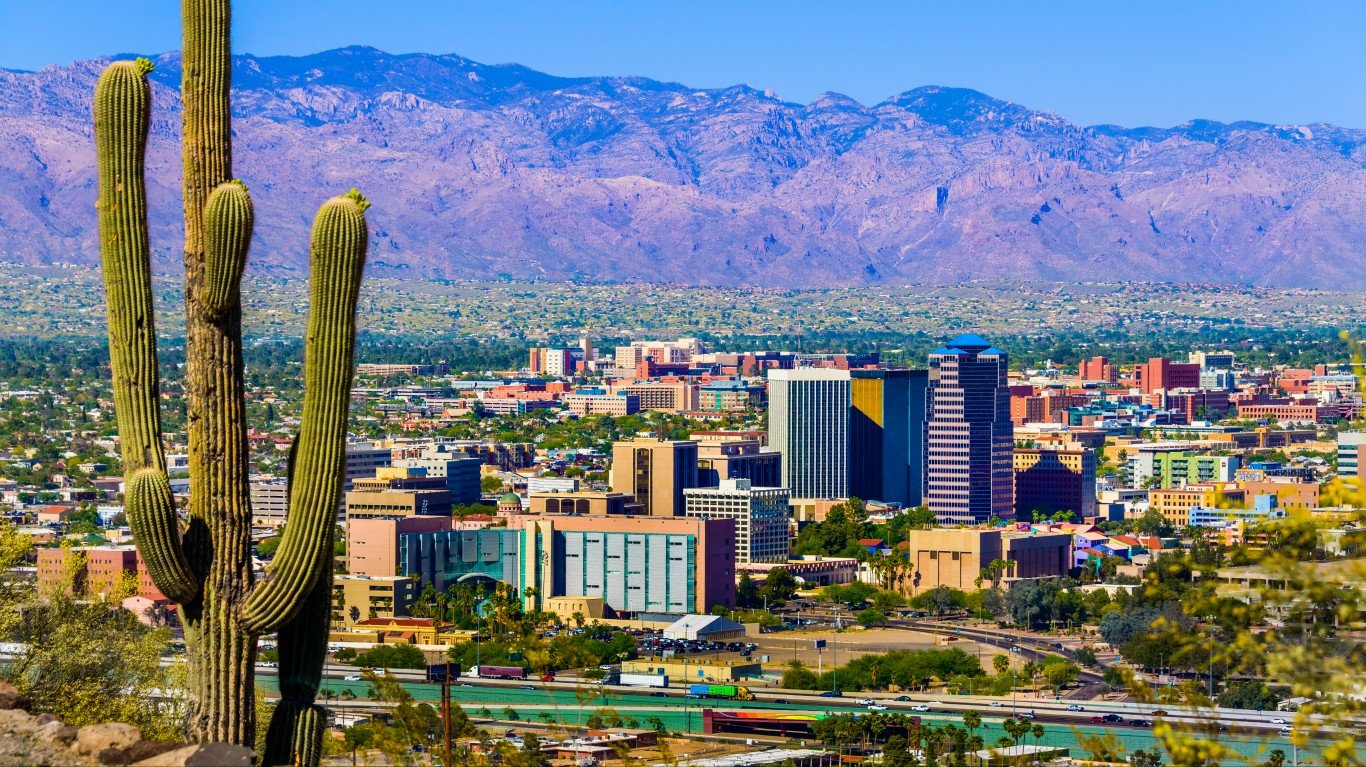
2. Tucson, AZ
> Days per year with 90 F+ temp.: 147
> Highest temp. on record (1946-2018): 117.0 F
> Normal mid-summer high: 100.2 F
> Normal year-round high: 82.9 F
[in-text-ad-2]
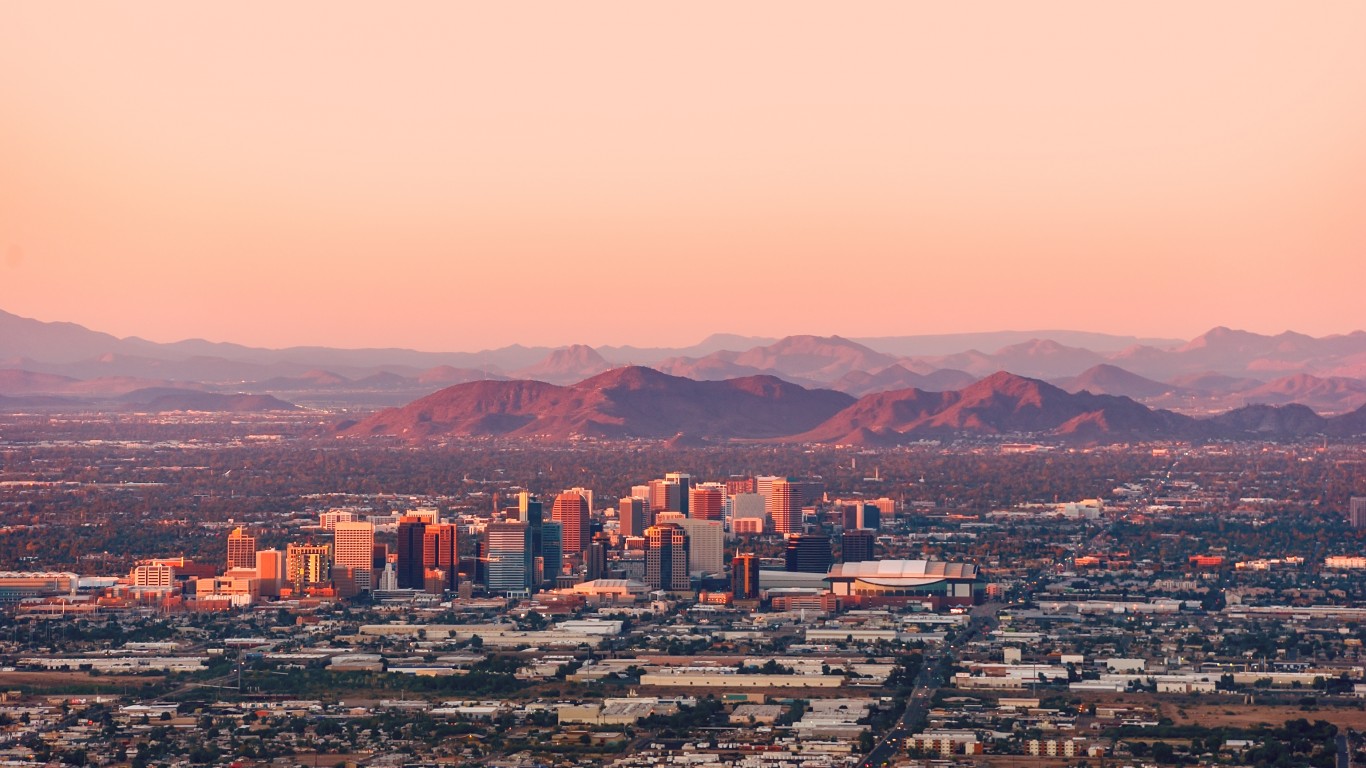
1. Phoenix, AZ
> Days per year with 90 F+ temp.: 169
> Highest temp. on record (1933-2018): 122.0 F
> Normal mid-summer high: 106.1 F
> Normal year-round high: 86.6 F
Methodology:
To determine the hottest cities in America, 24/7 Wall St. ranked 192 cities based on the average number of 90-plus degree days per year, using climate data from the National Oceanic Atmospheric Administration’s 2018 Comparative Climatic Data report. In cases where multiple cities had the same amount of 90-plus degree days per year, the city with the higher average daily maximum temperature during its hottest month was given the higher rank. Only cities with populations of at least 10,000 were considered.
Averages for each city were calculated since each city began keeping records.
The normal mid-summer high temperature is the 30-year average daily maximum temperature for the month with the highest average daily temperature for each city, using data recorded between 1981 and 2010. The normal year-round high temperature is the 30-year average daily maximum temperature from 1981 to 2010. Highest temperature on record refers to the highest temperature recorded at each city’s weather station, and this figure may differ from citywide or statewide figures. A full year’s data was not always available for the first year listed in each city’s range of recorded temperatures.
Sponsored: Find a Qualified Financial Advisor
Finding a qualified financial advisor doesn’t have to be hard. SmartAsset’s free tool matches you with up to 3 fiduciary financial advisors in your area in 5 minutes. Each advisor has been vetted by SmartAsset and is held to a fiduciary standard to act in your best interests. If you’re ready to be matched with local advisors that can help you achieve your financial goals, get started now.
Thank you for reading! Have some feedback for us?
Contact the 24/7 Wall St. editorial team.
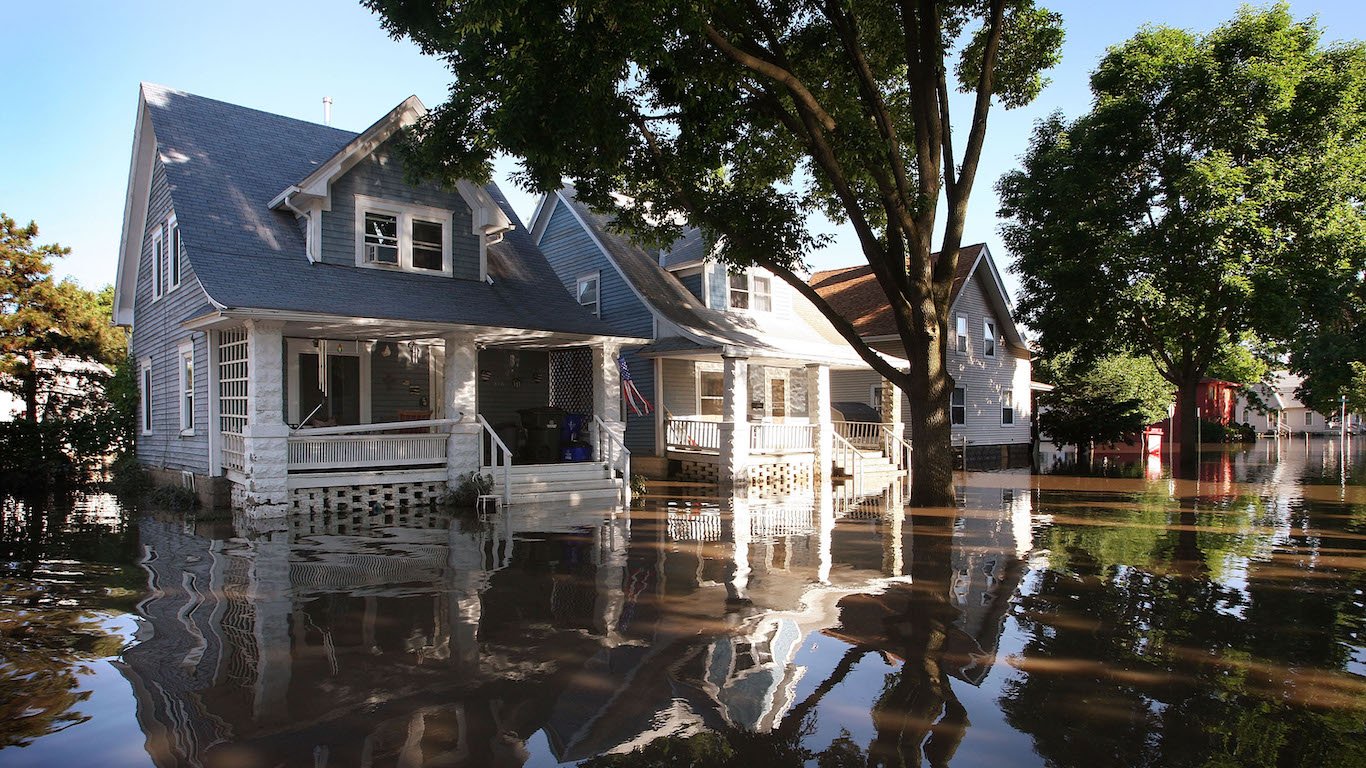 24/7 Wall St.
24/7 Wall St.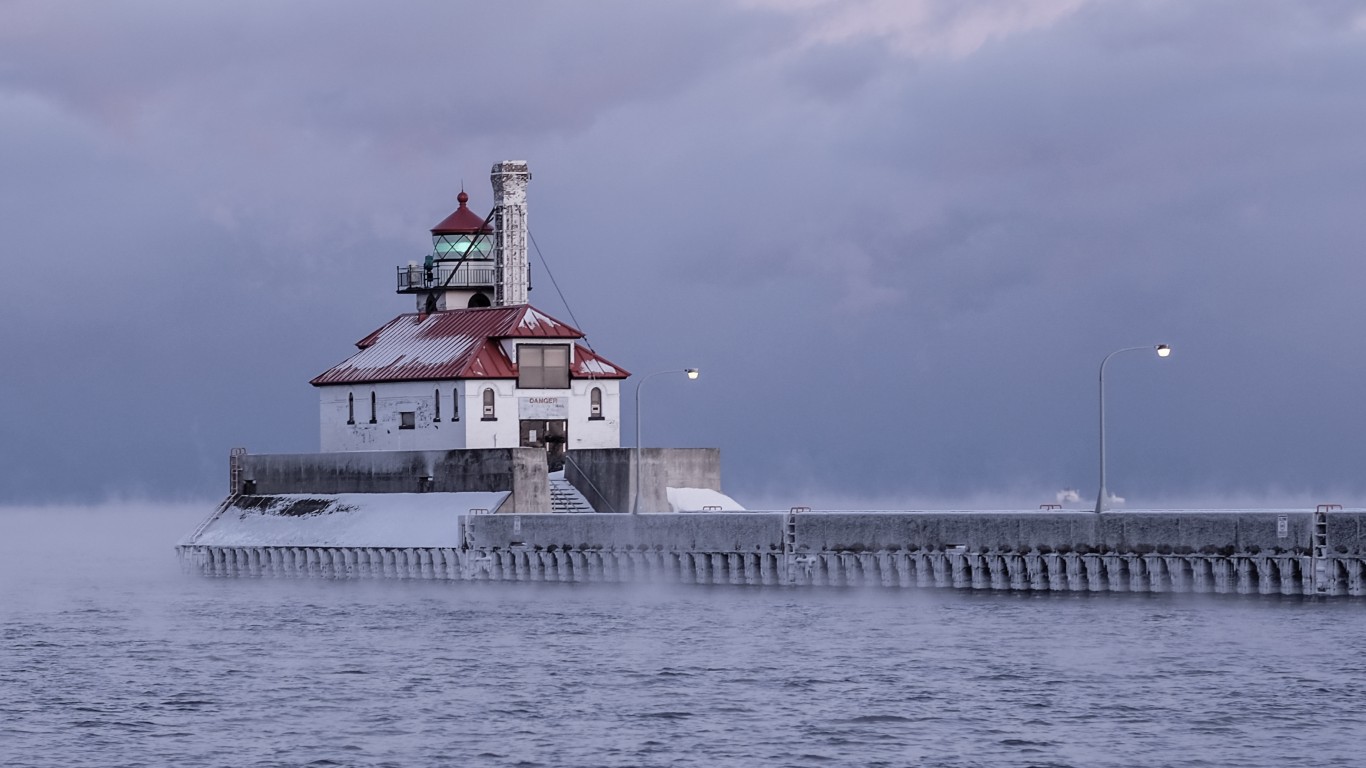 24/7 Wall St.
24/7 Wall St.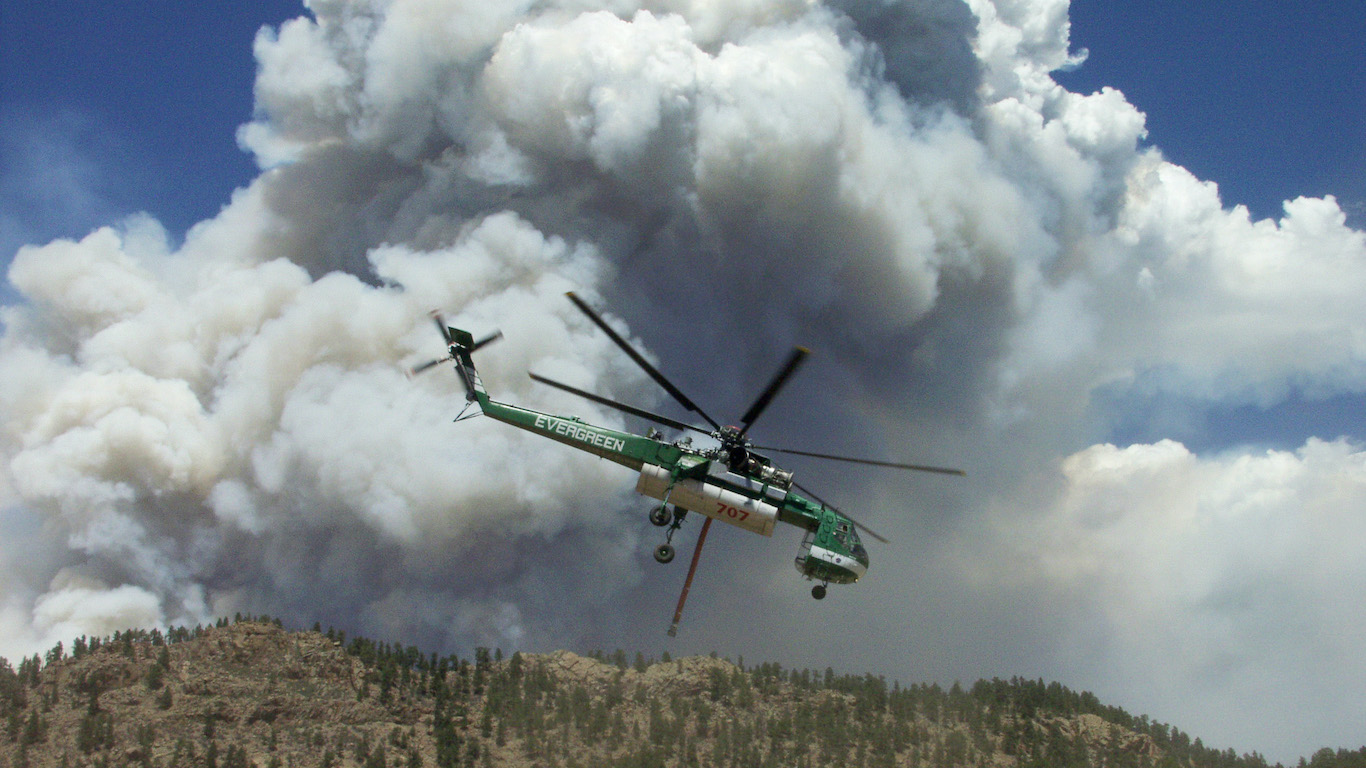 24/7 Wall St.
24/7 Wall St.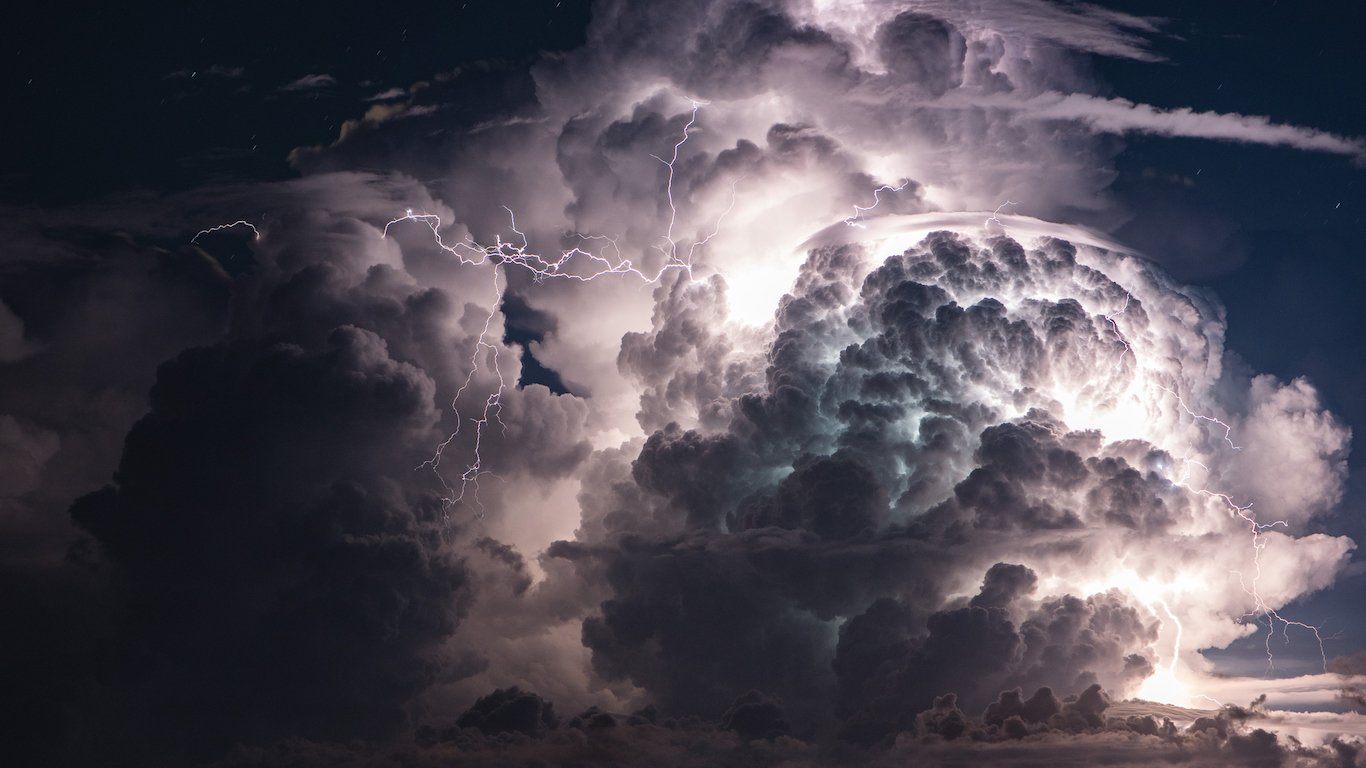 24/7 Wall St.
24/7 Wall St.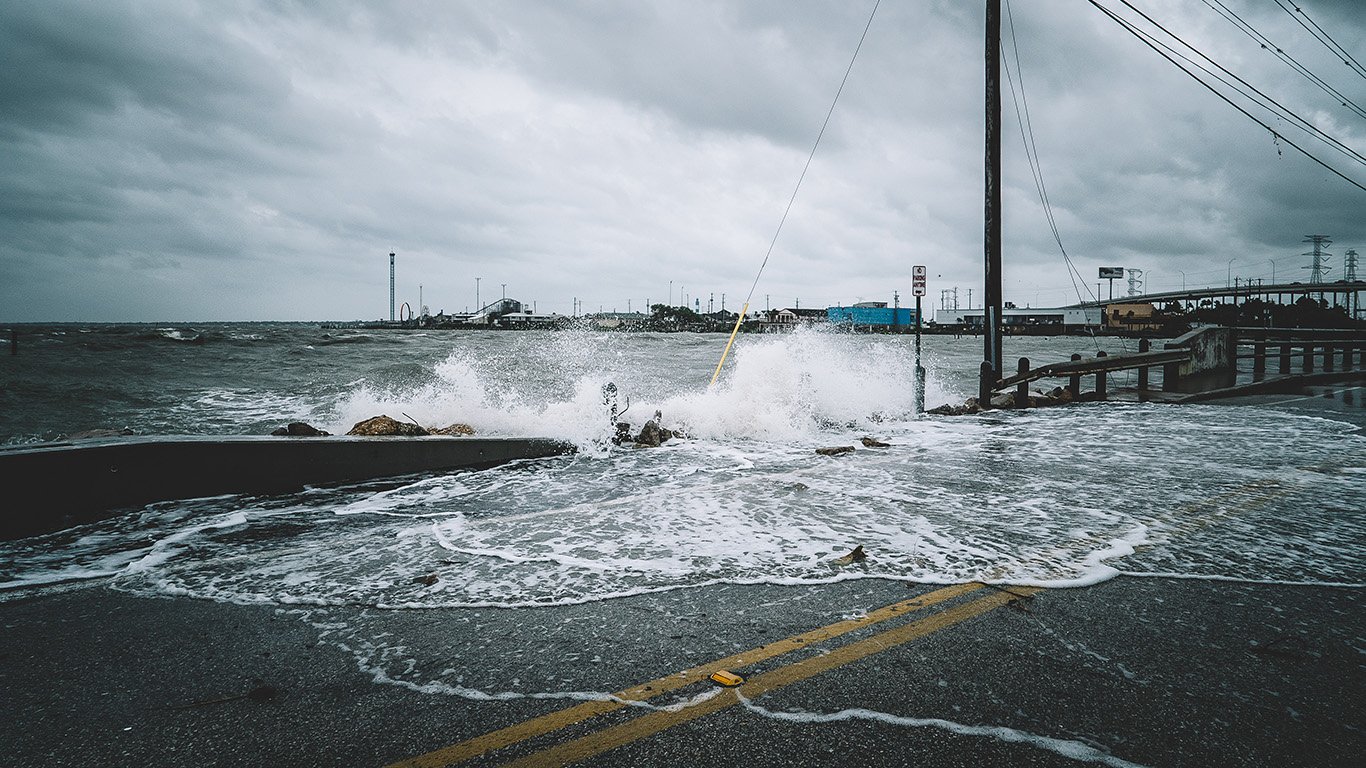 24/7 Wall St.
24/7 Wall St.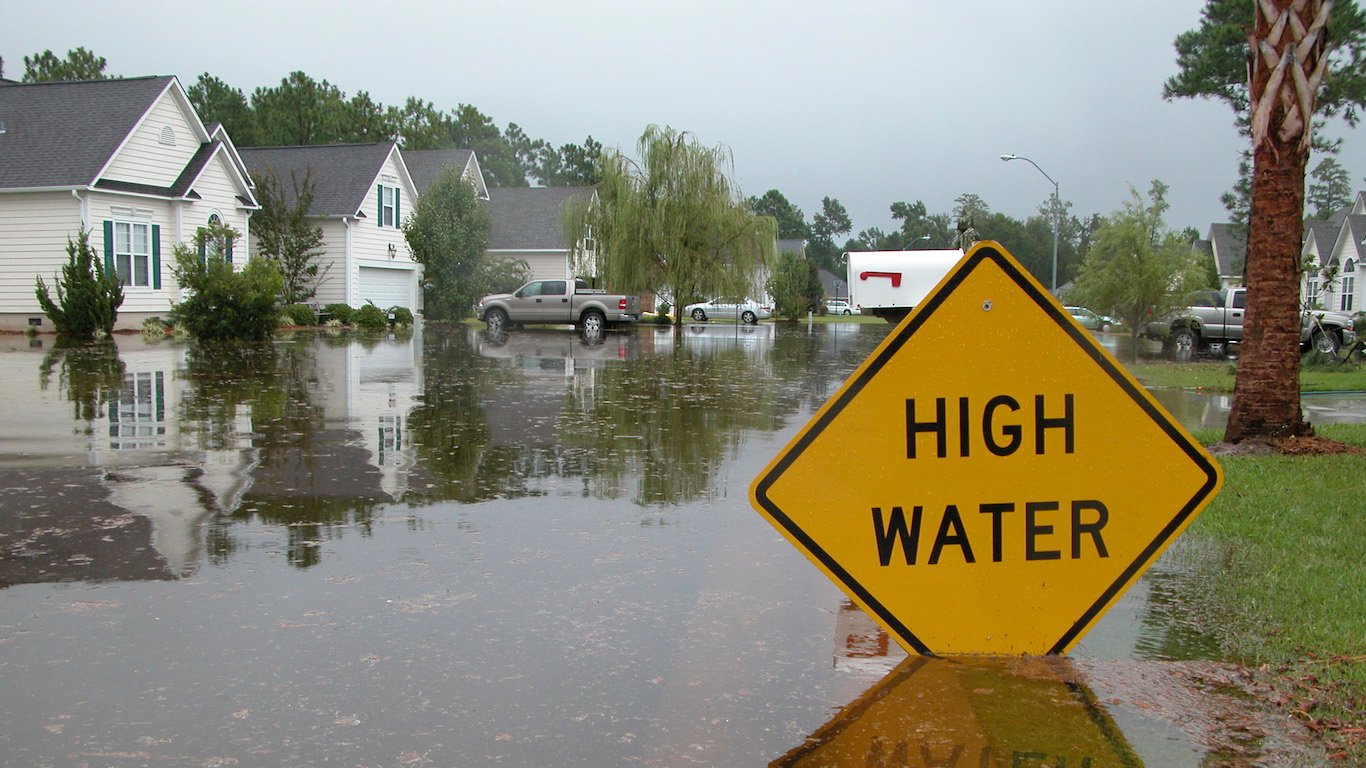 24/7 Wall St.
24/7 Wall St.